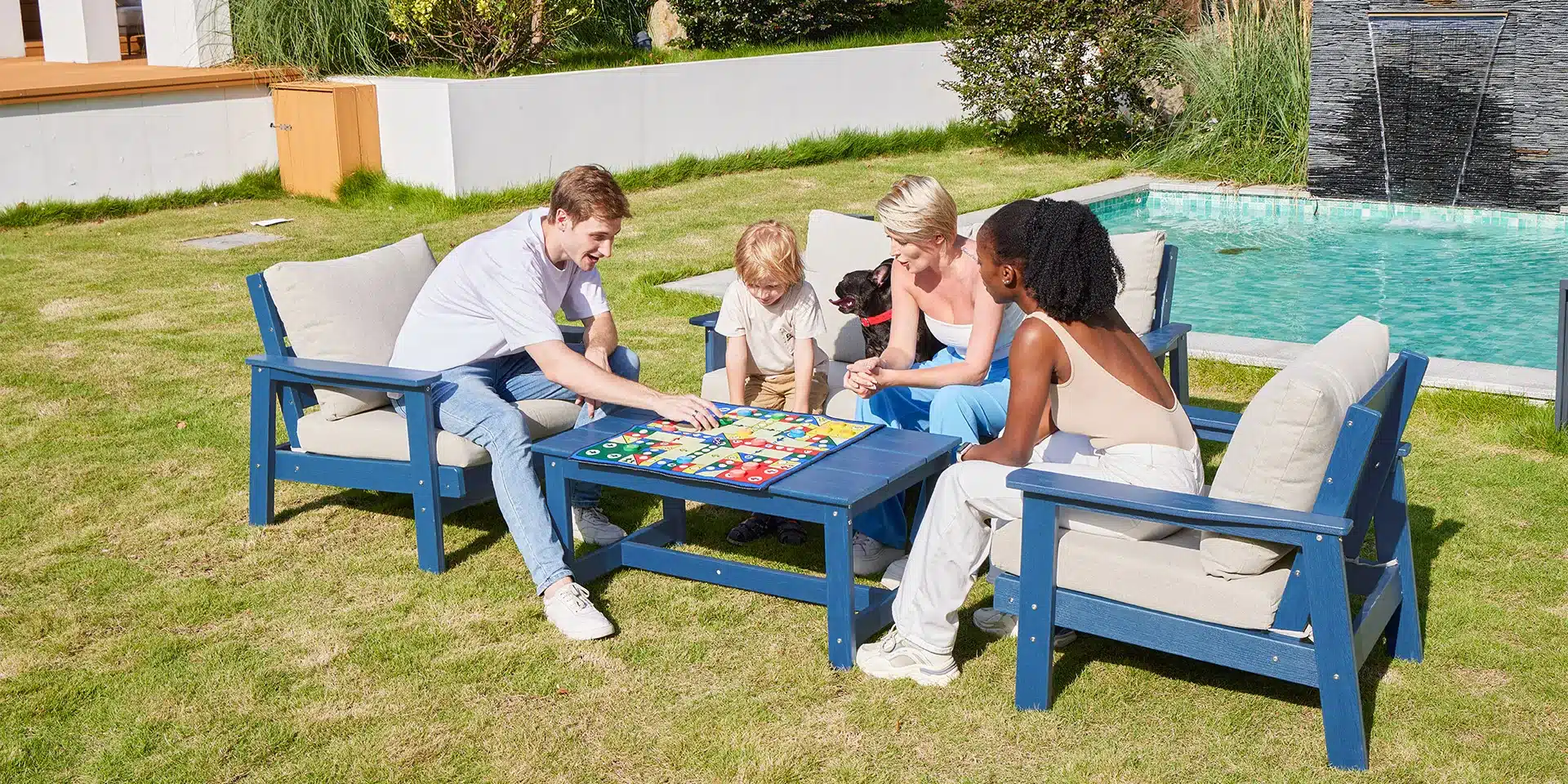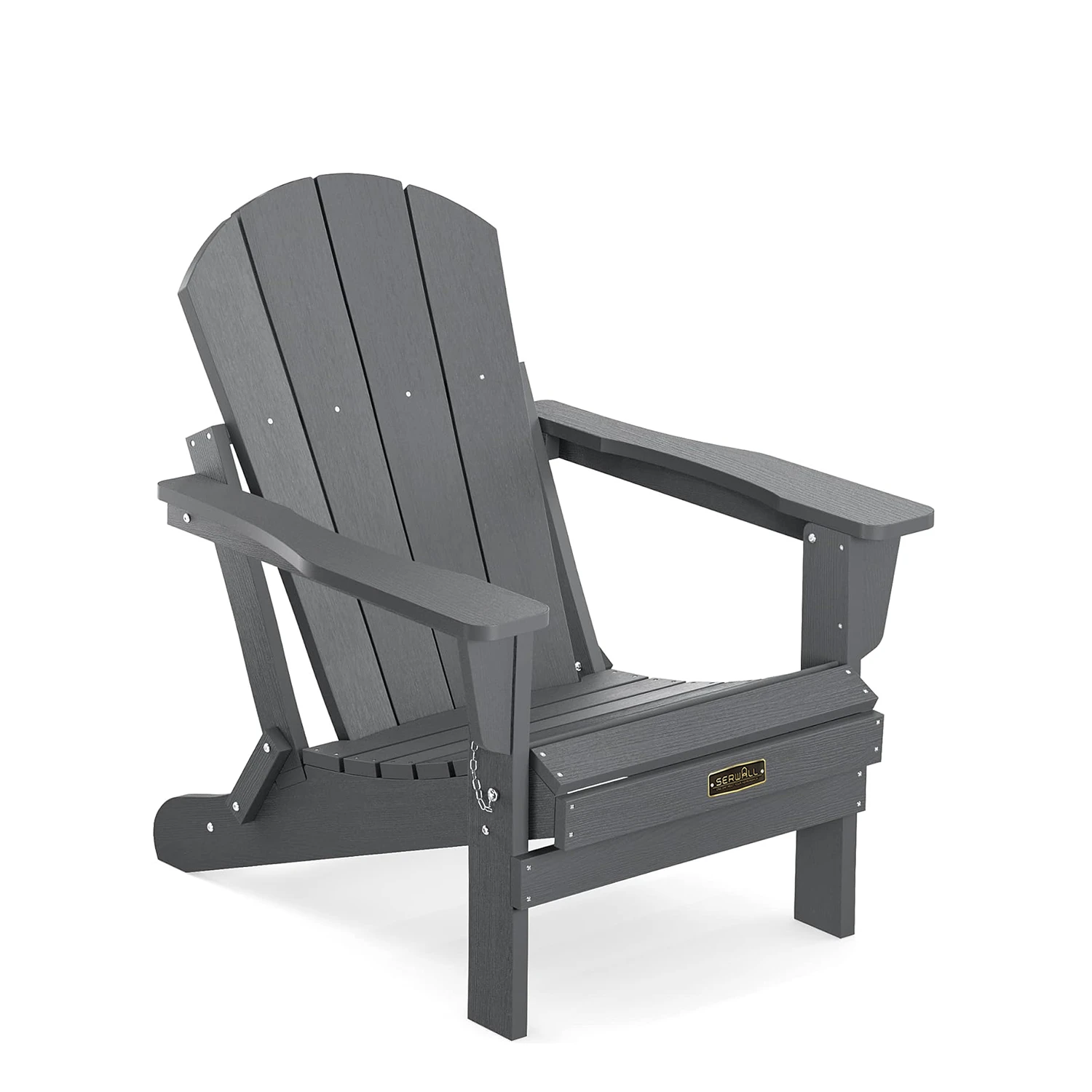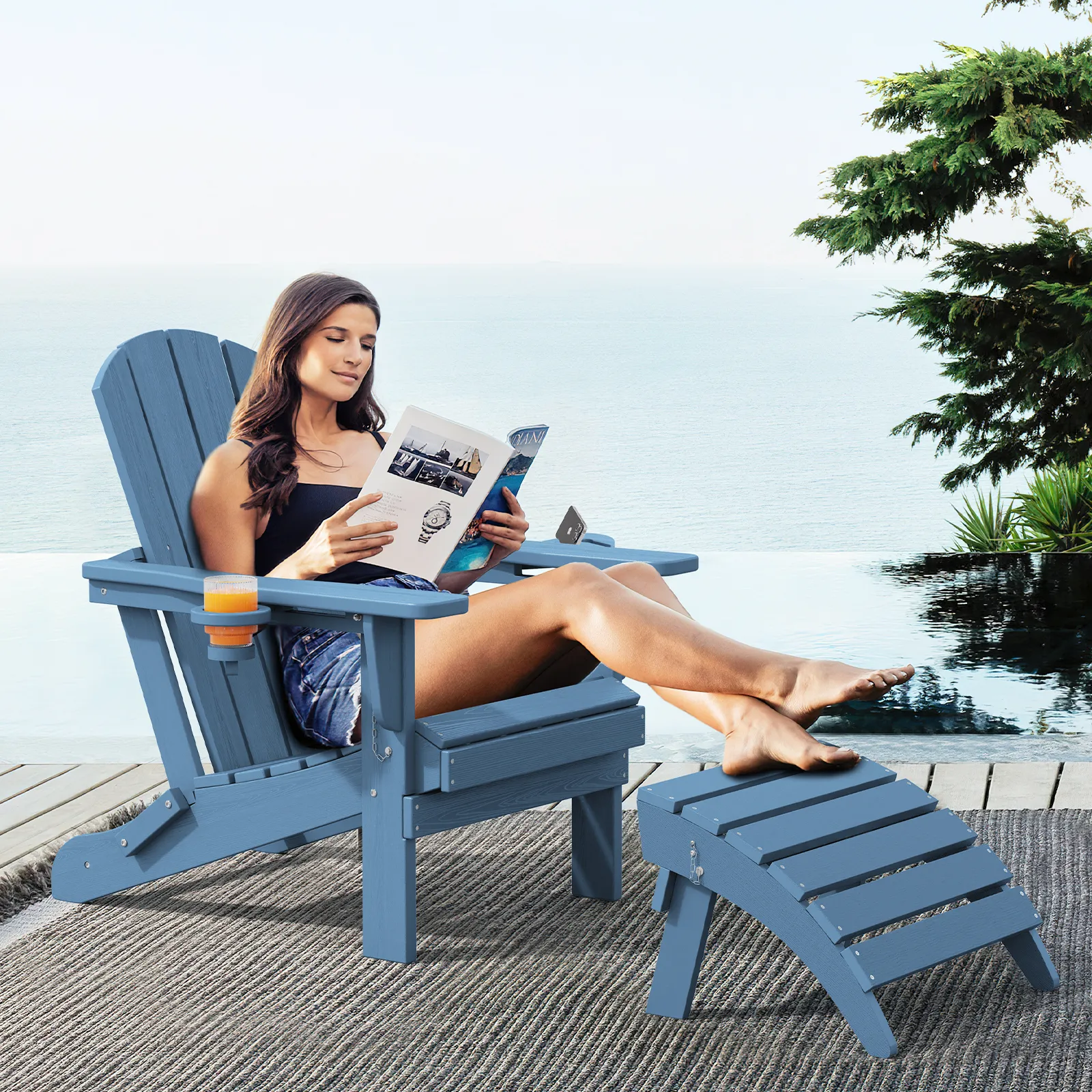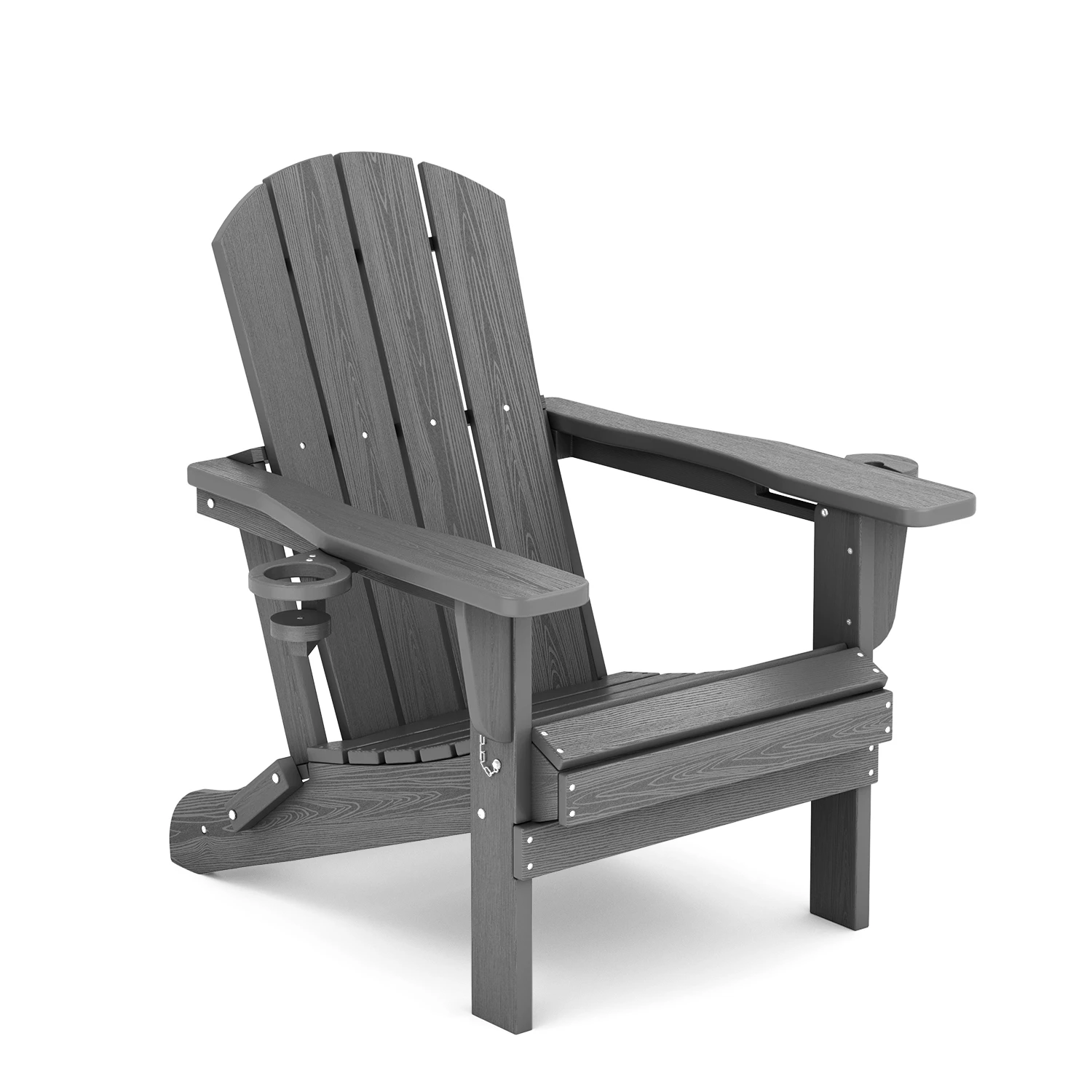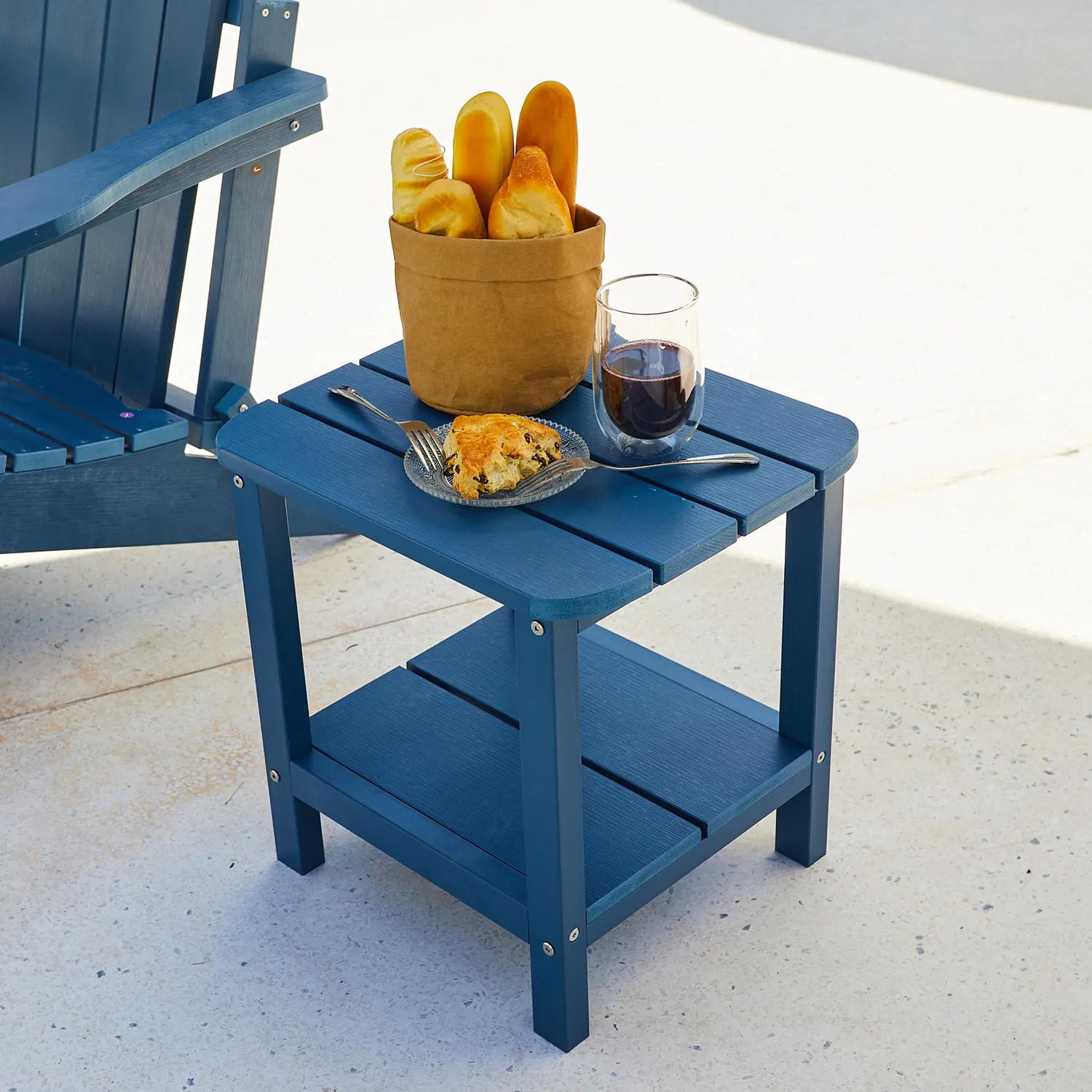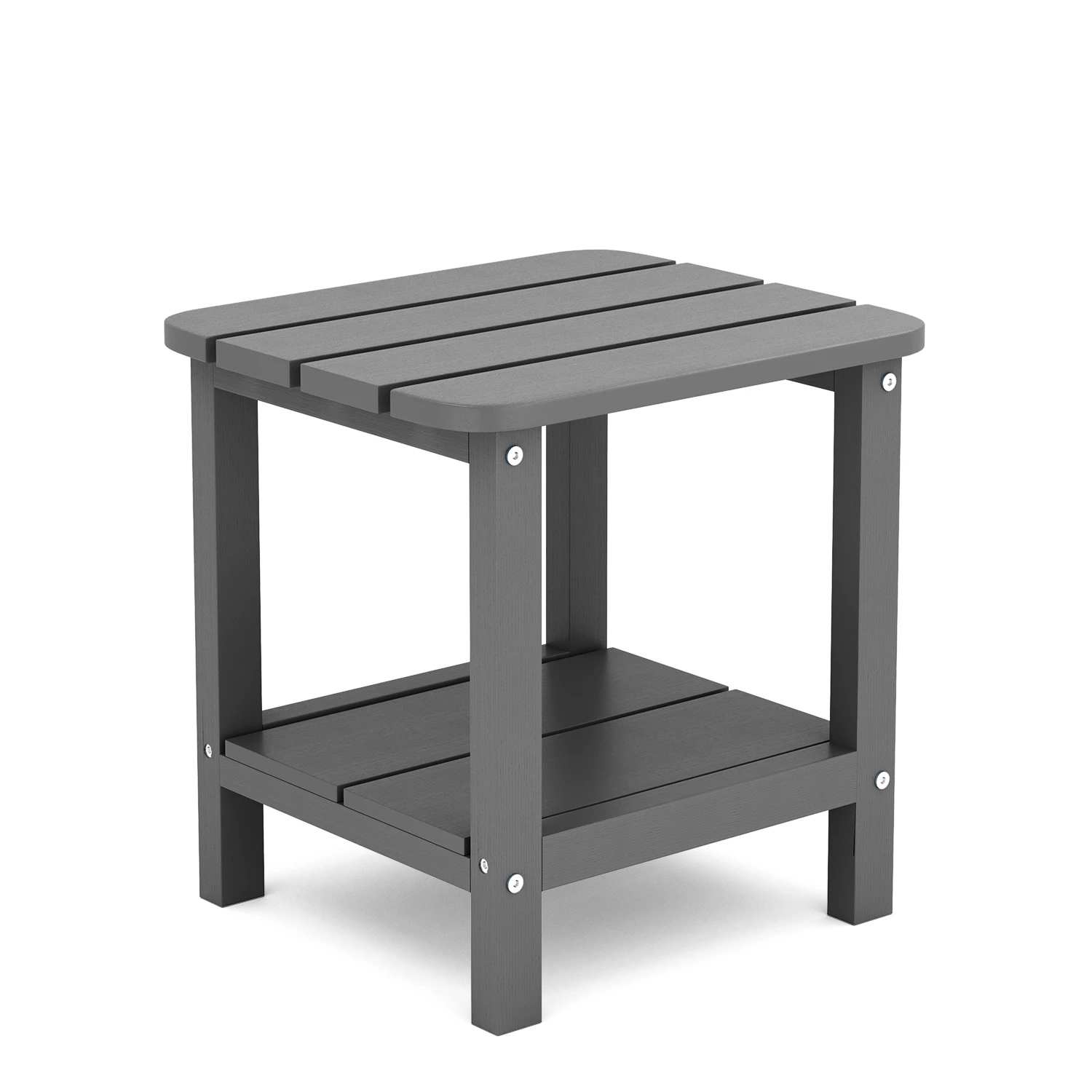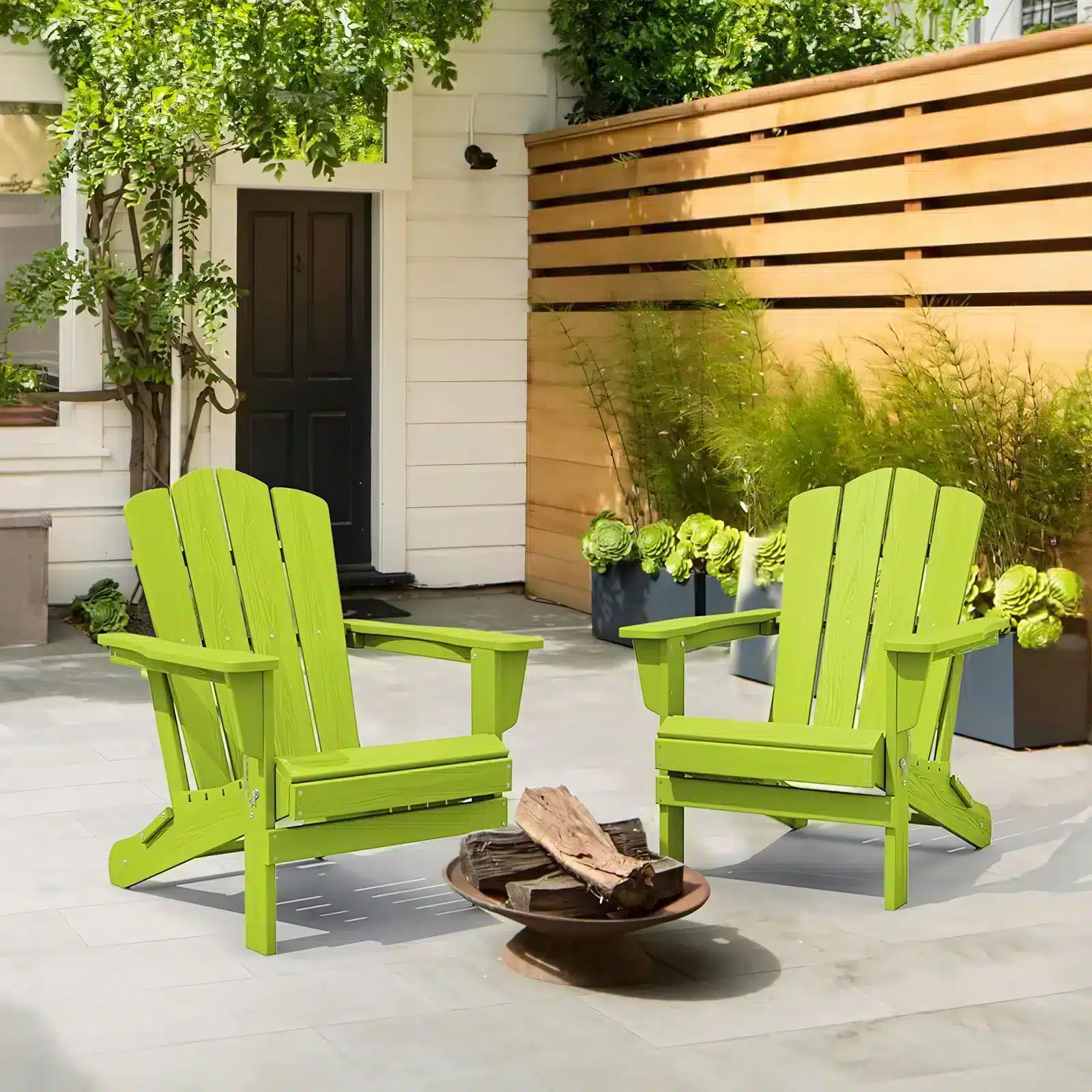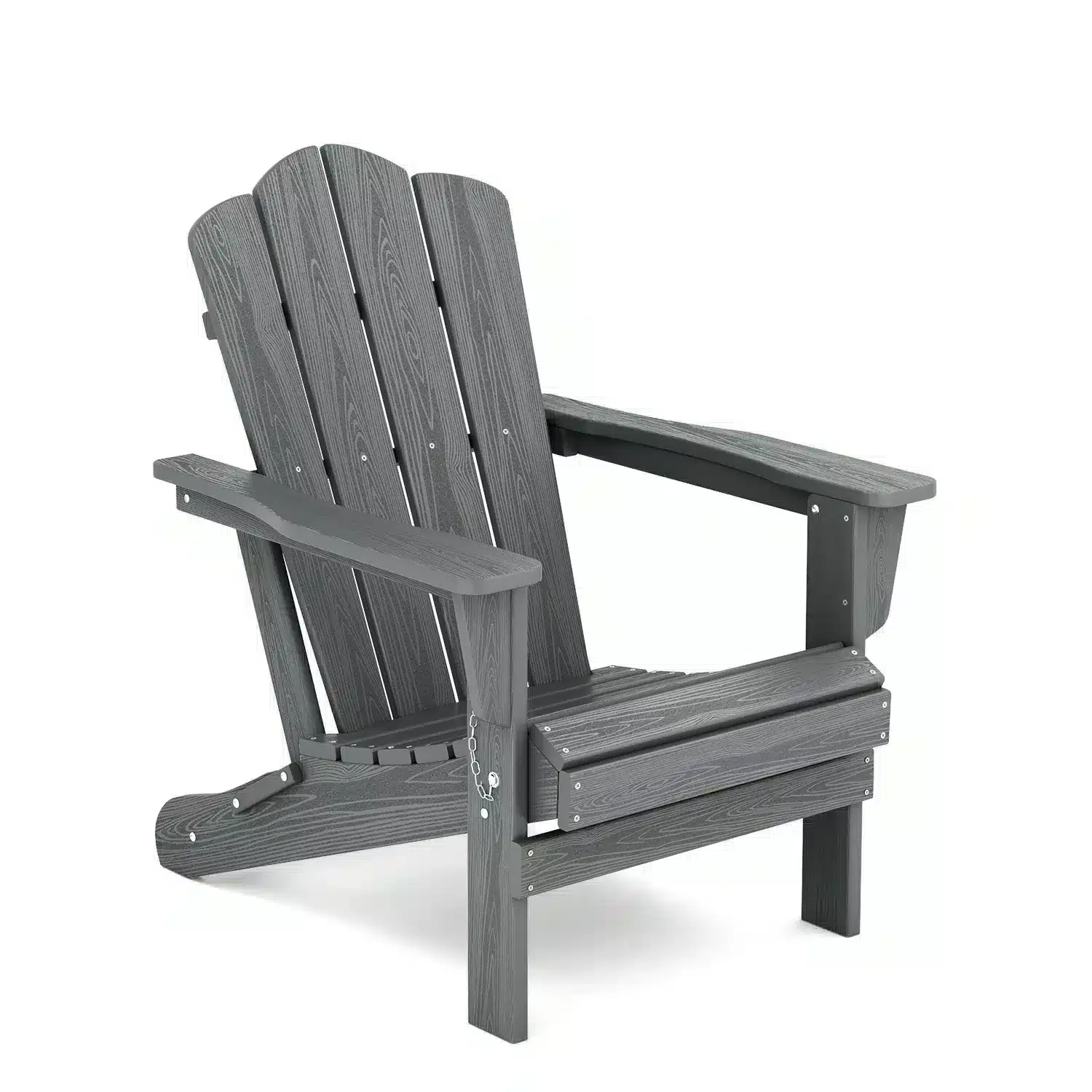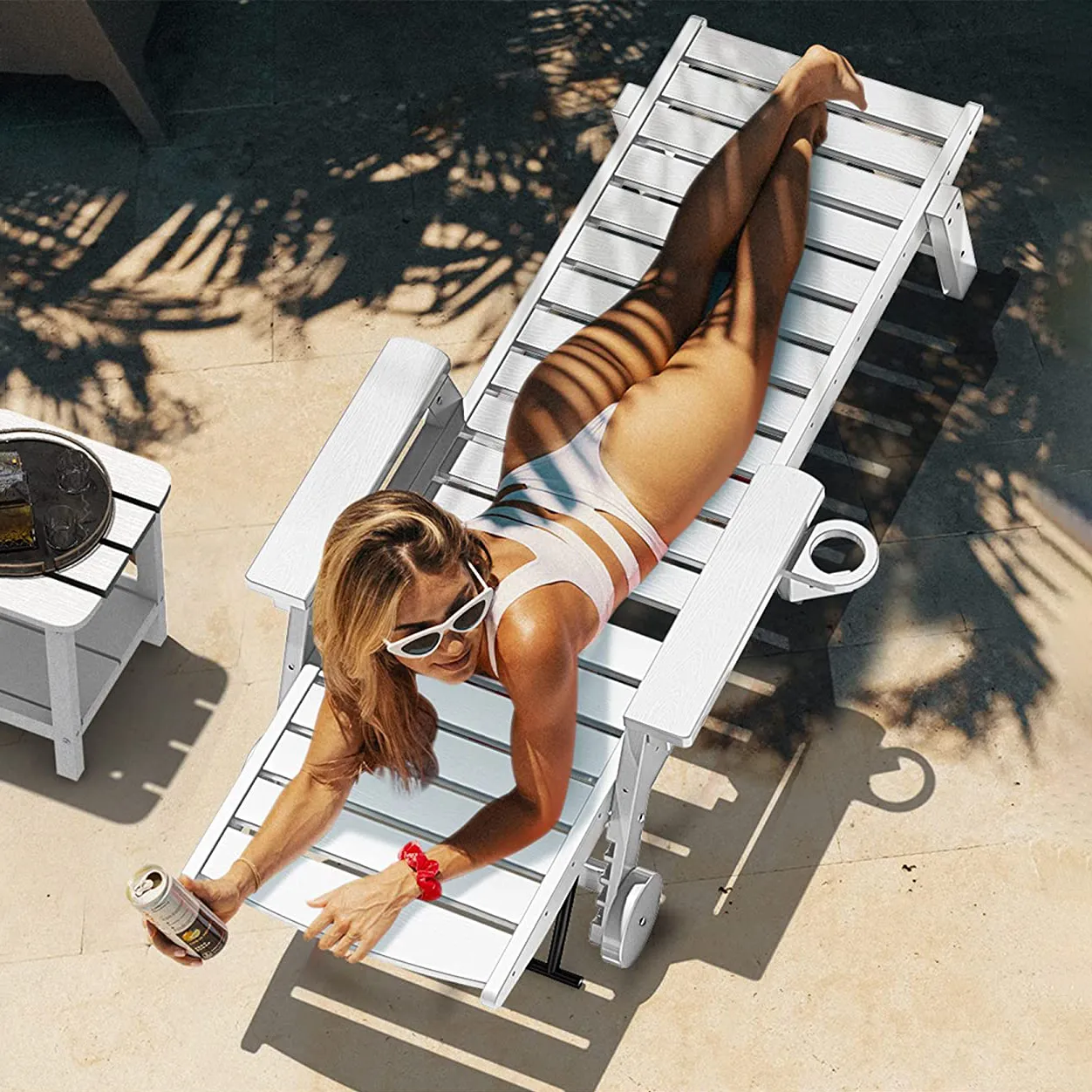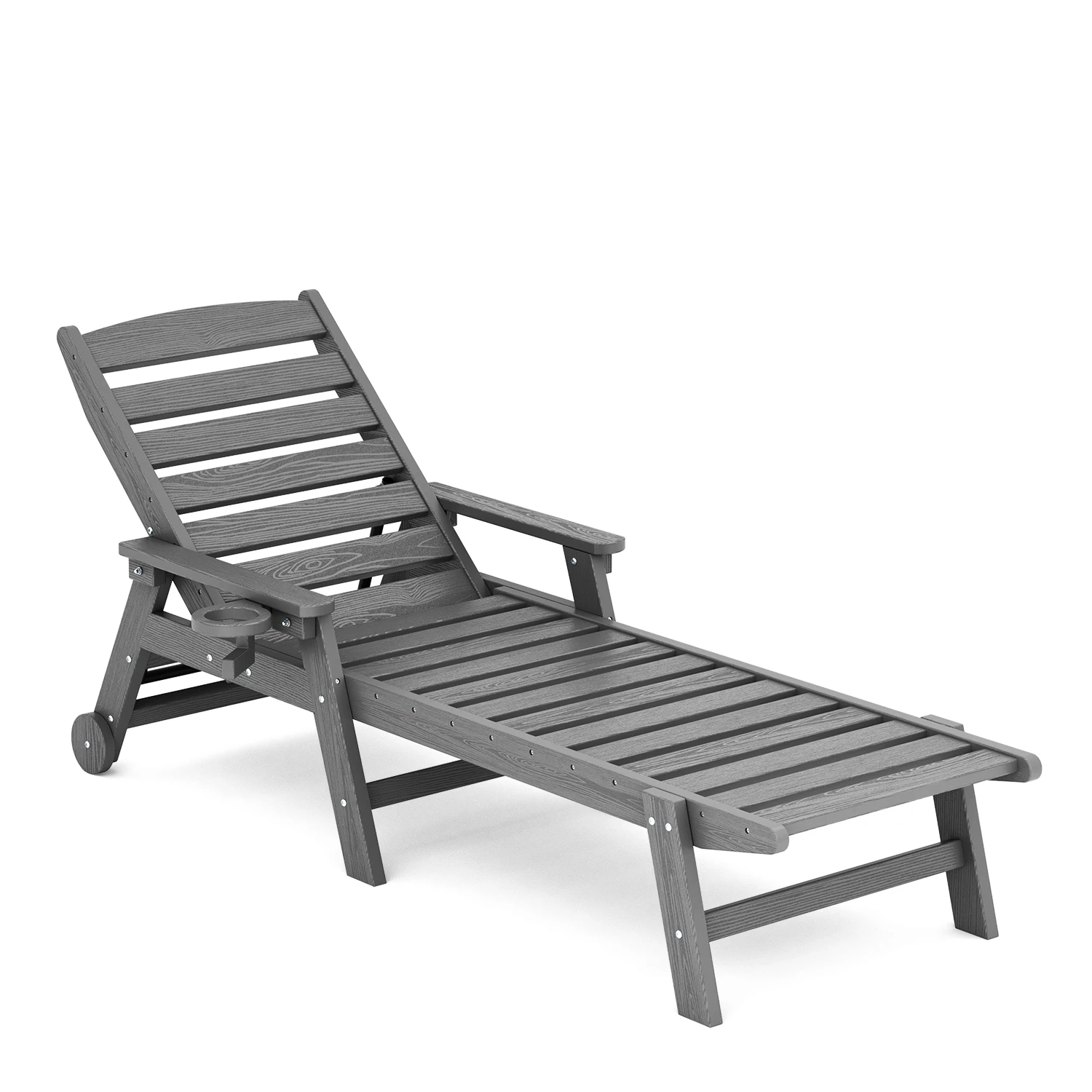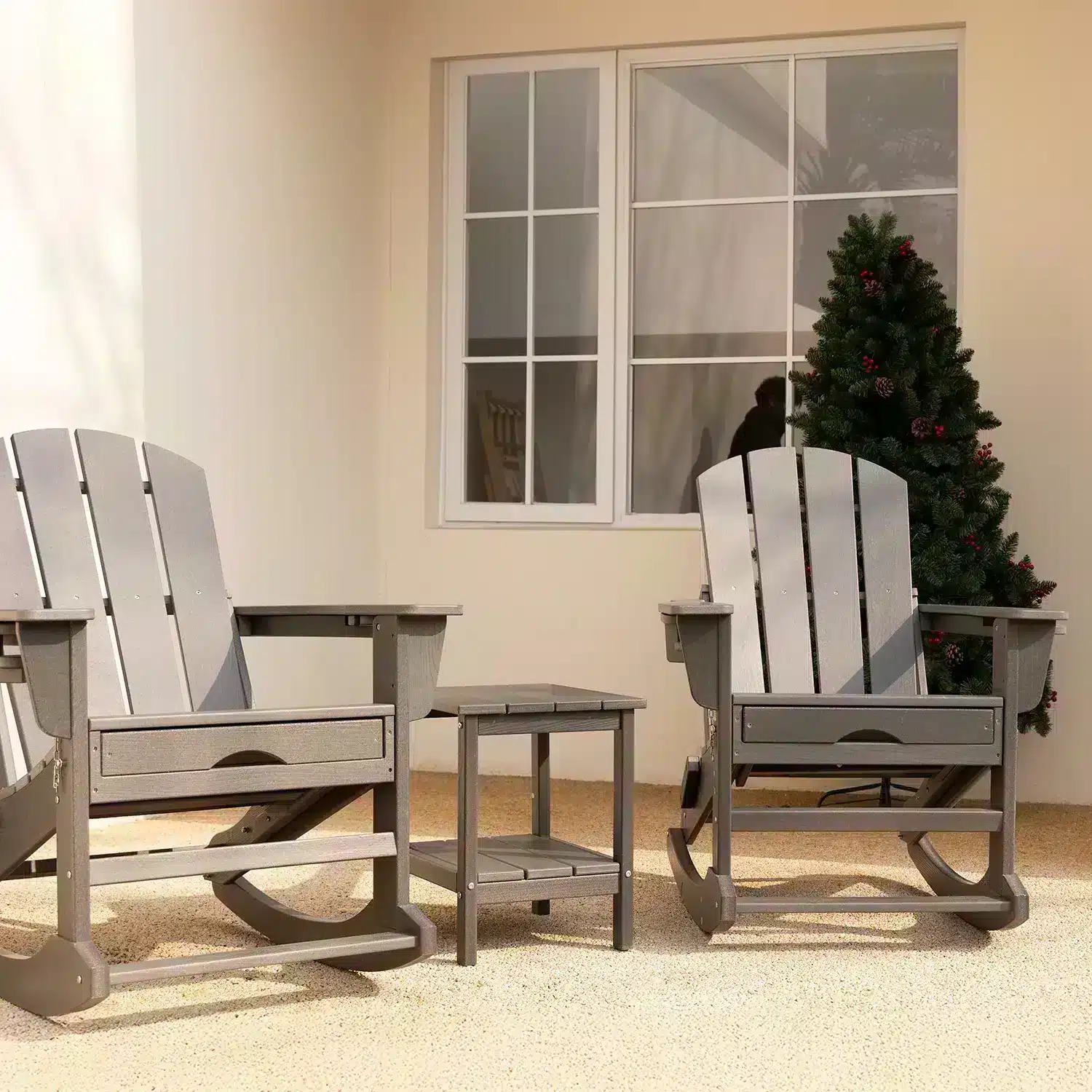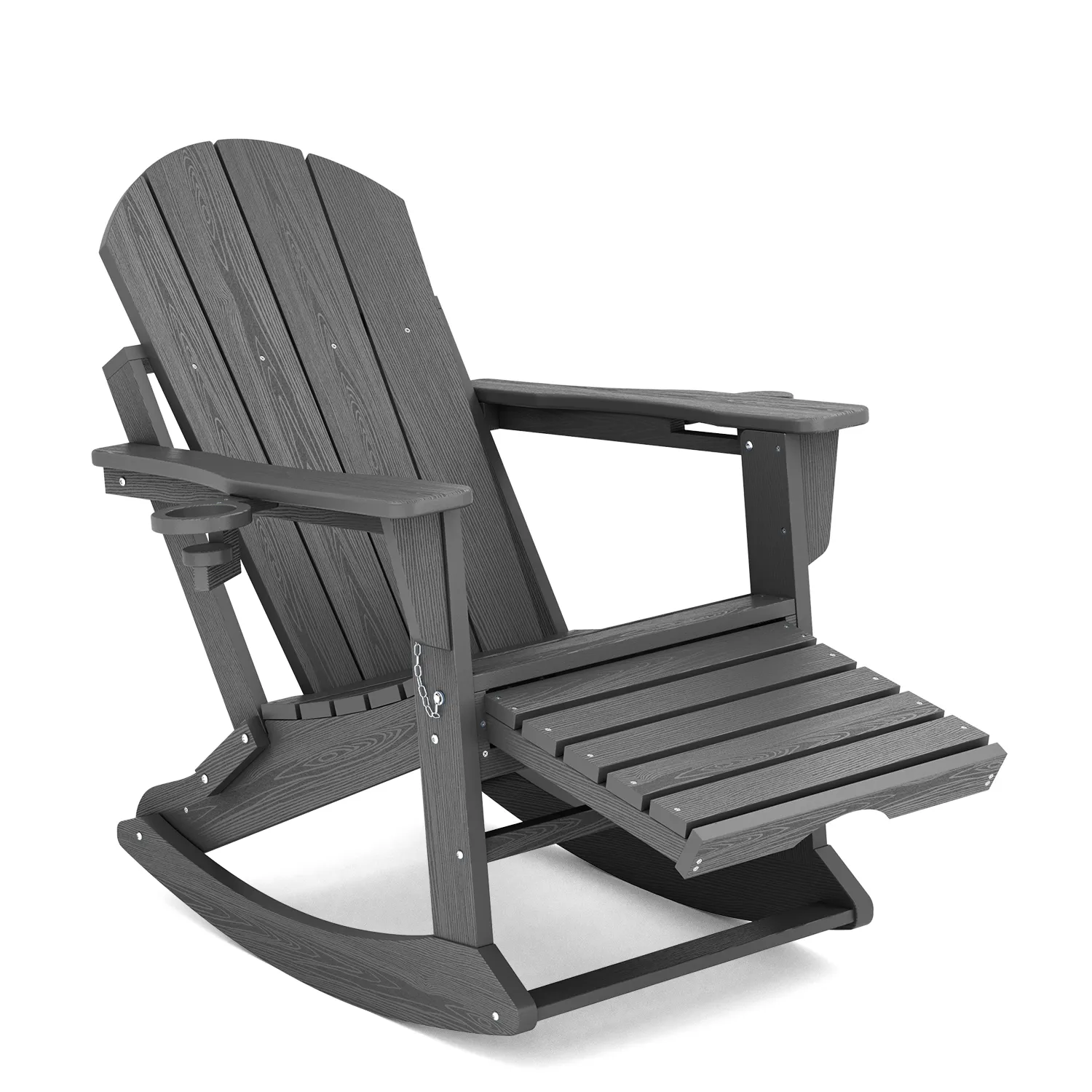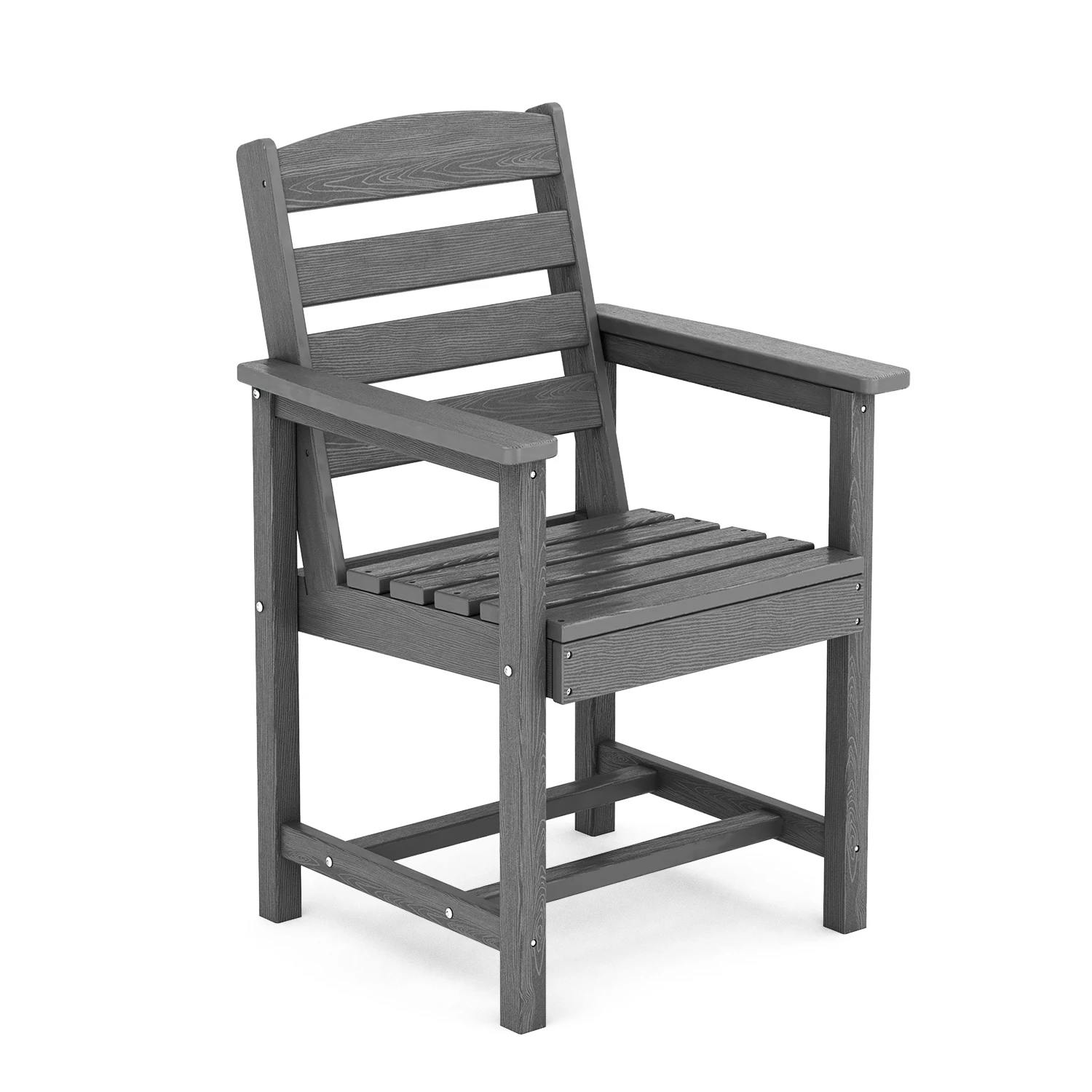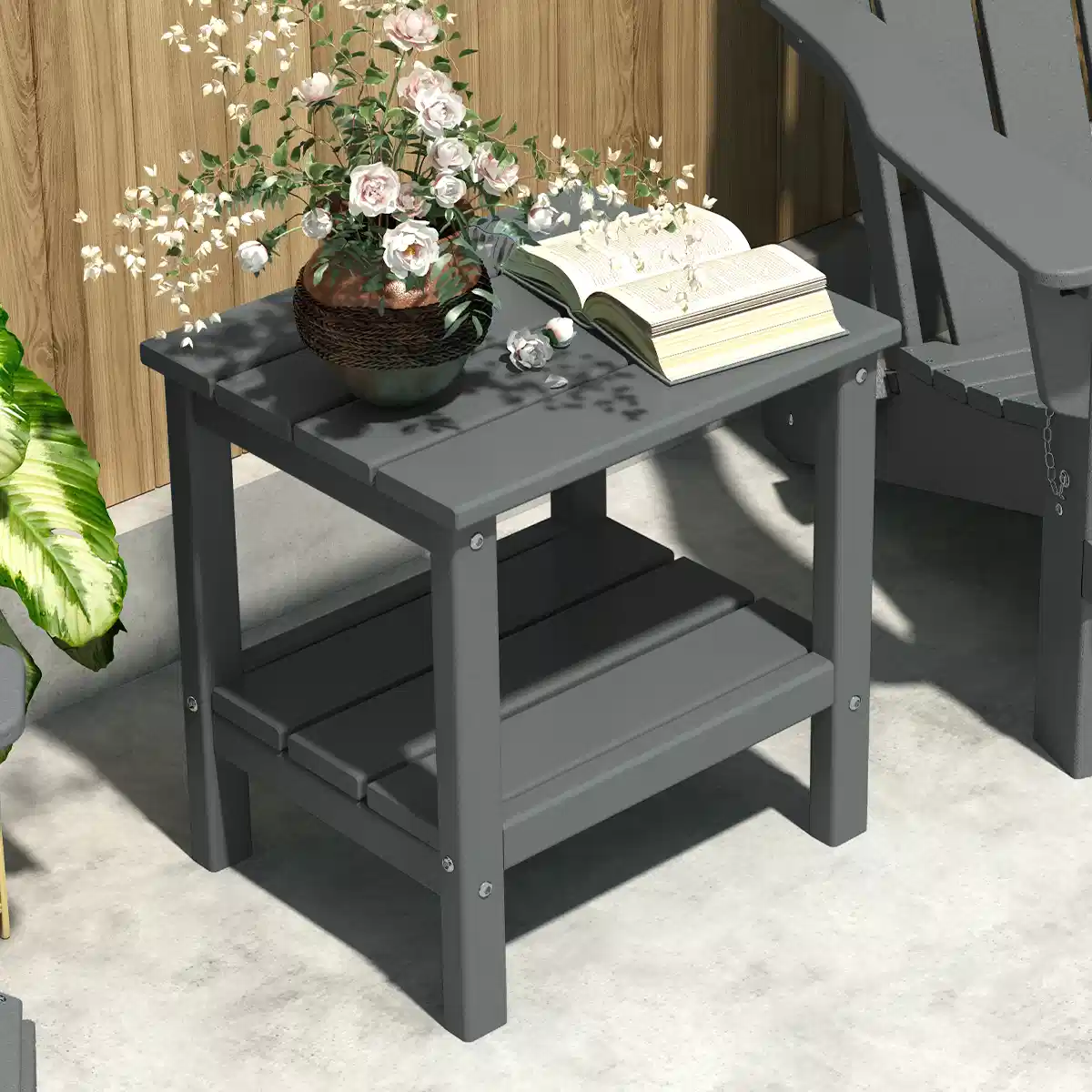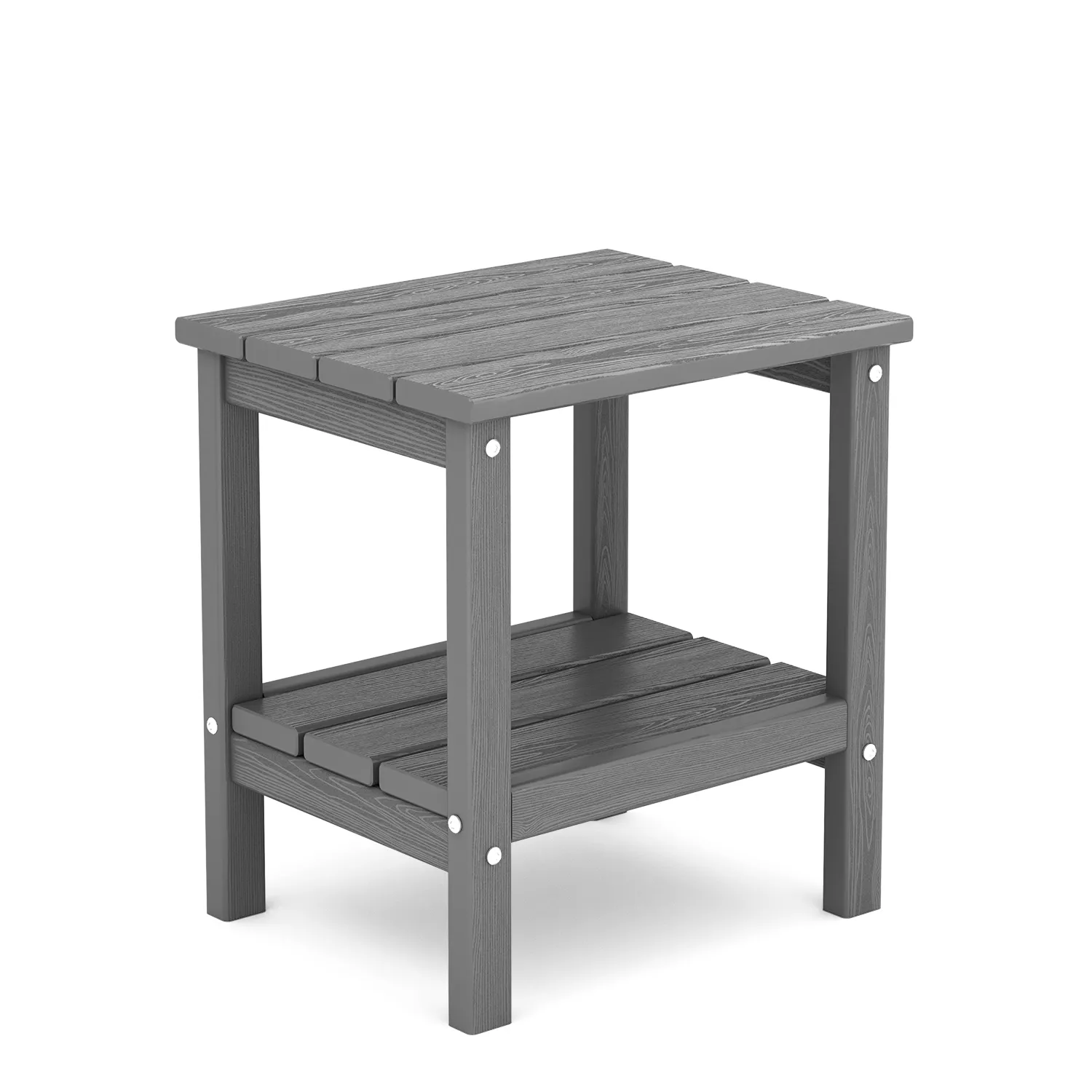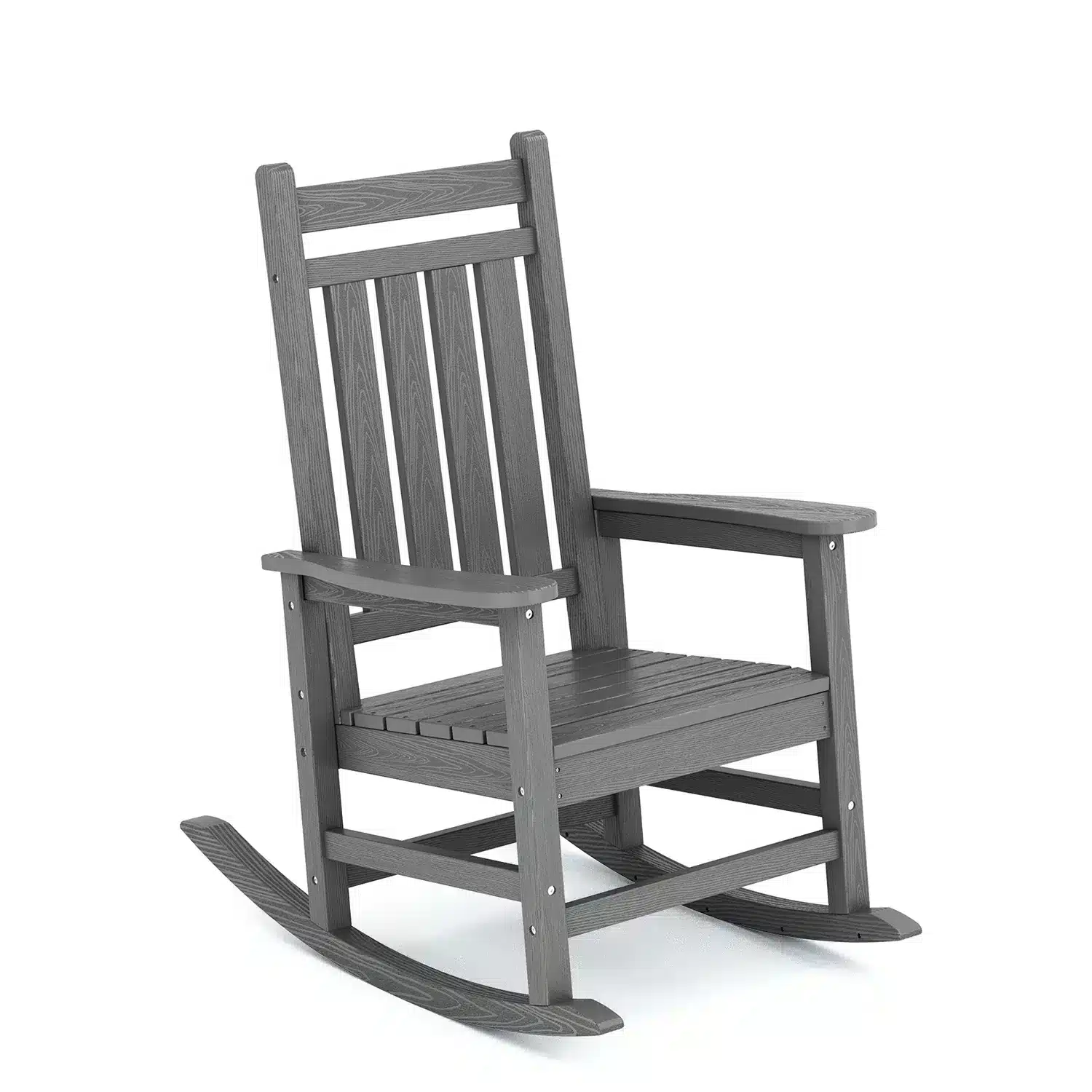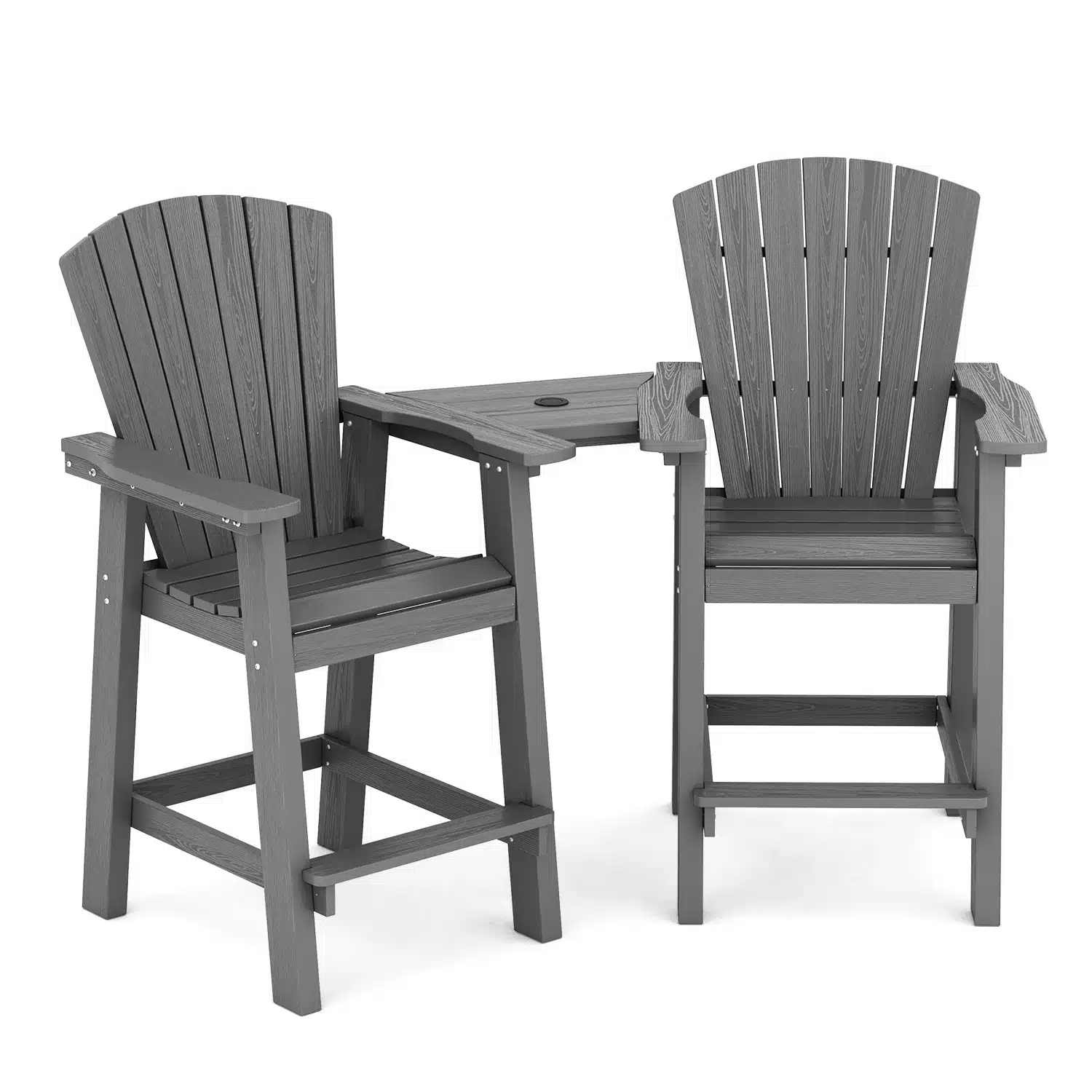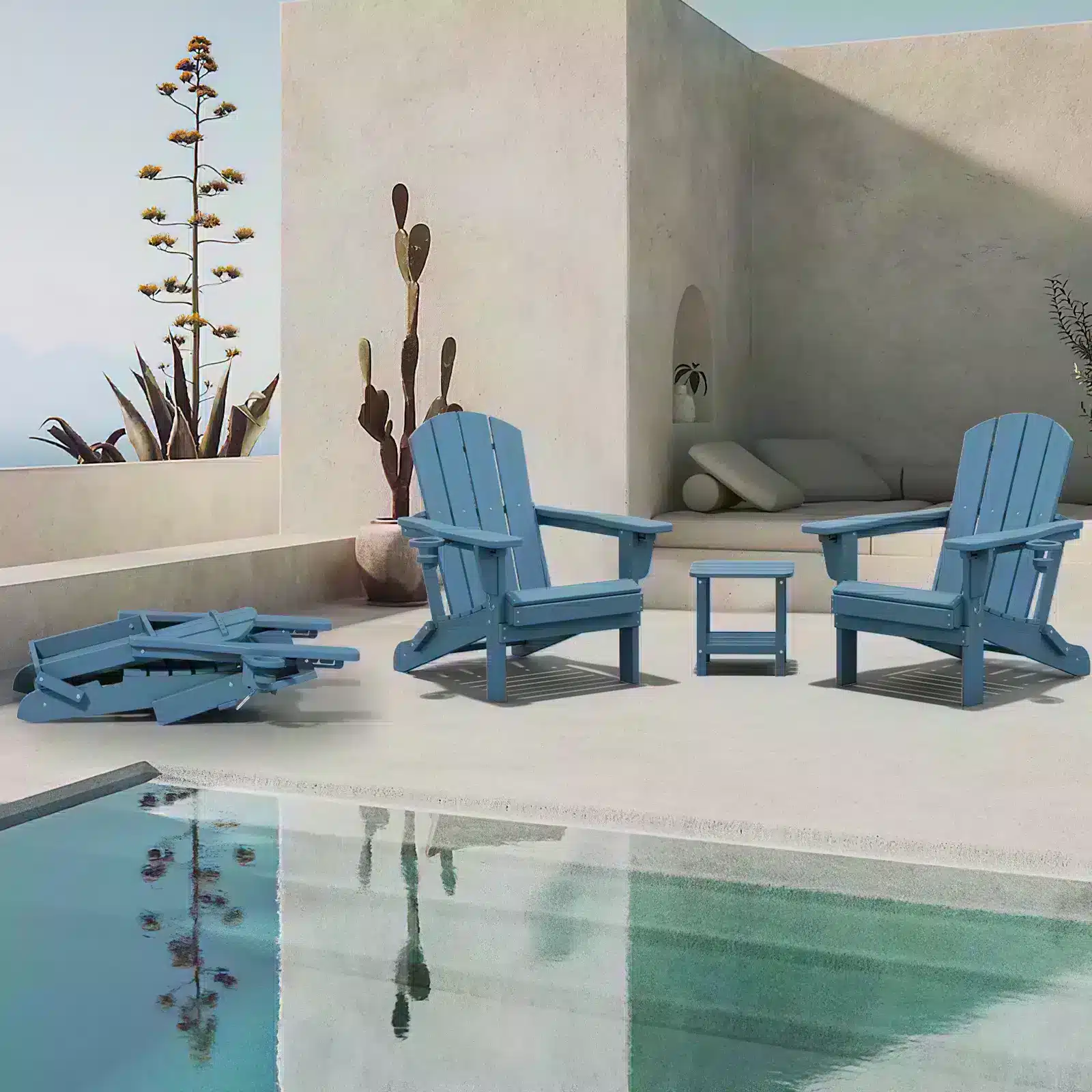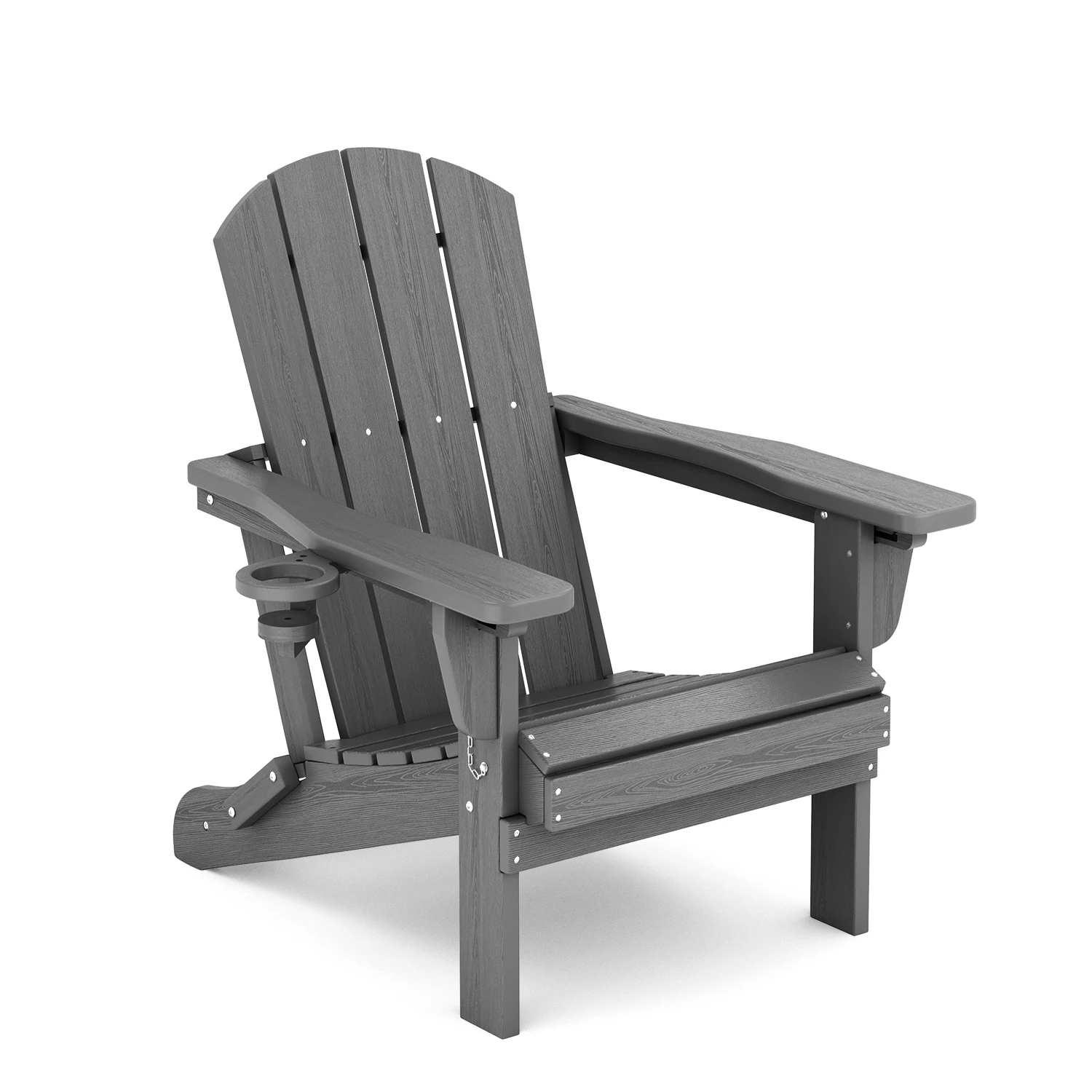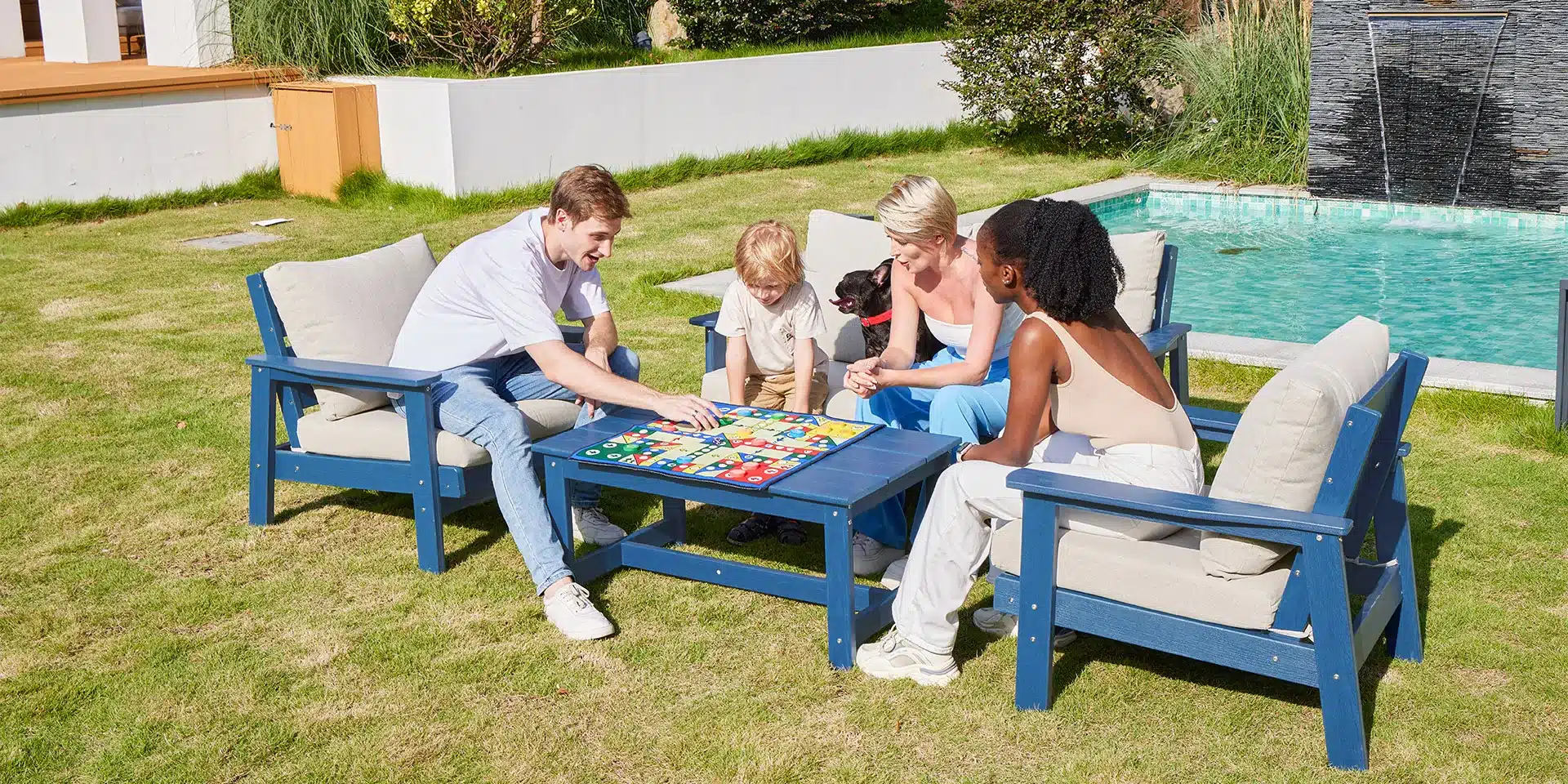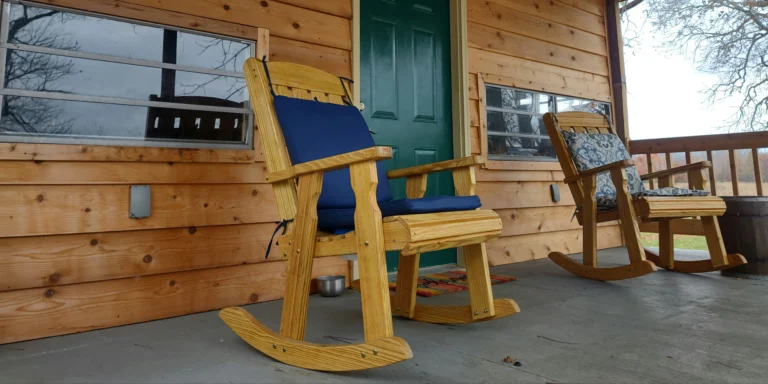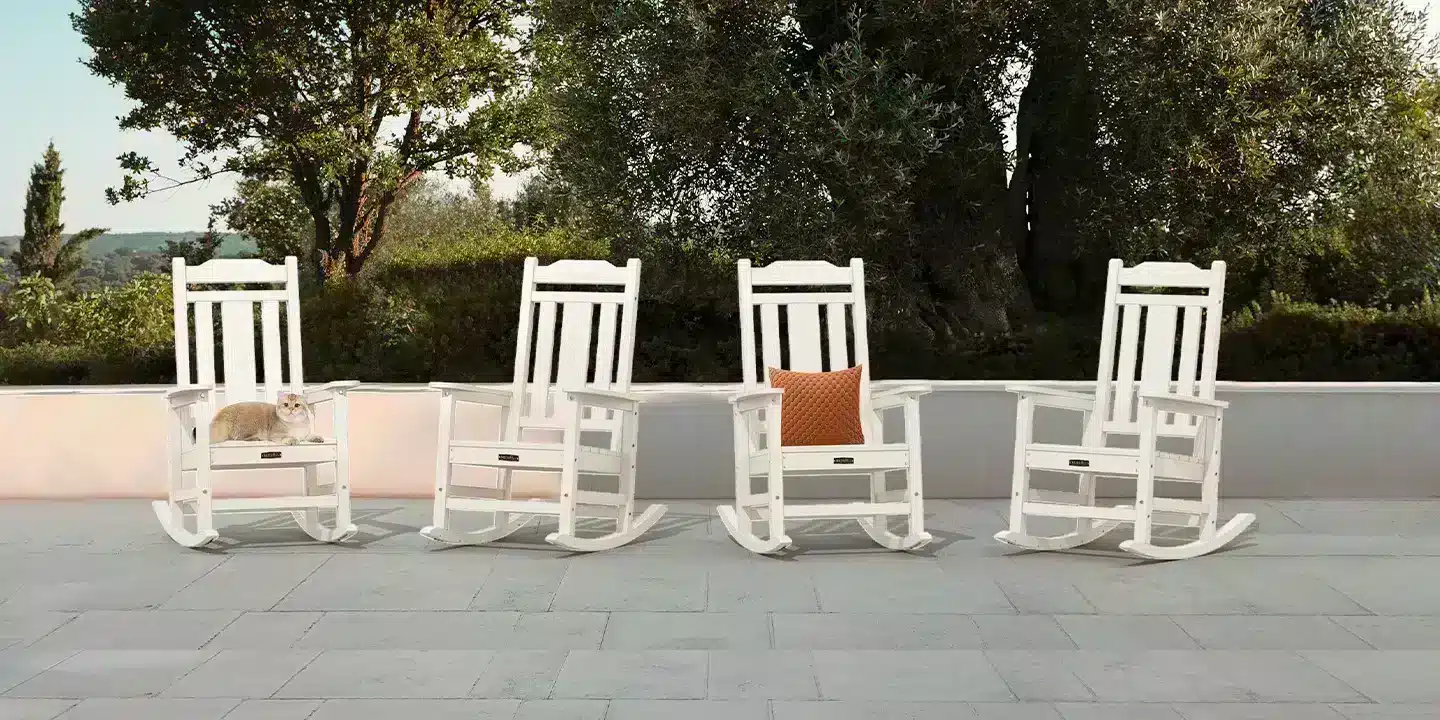Outdoor furniture is exposed to the sun and rain for a long time, and it’s inevitable that dust and stains will accumulate, which will affect both the appearance and the user experience. Keeping furniture clean will not only extend its life, but also make your outdoor space comfortable. After all, no one wants to sit down and get covered in dust.
In this post, we will share with you a series of practical methods to help you easily take care of outdoor furniture, so that cleaning and maintenance are no longer a headache.
Cleaning Tips for Different Materials
Before keeping your outdoor furniture clean, you must first figure out how to properly clean your outdoor furniture. Furniture made of different materials has different requirements for cleaning and maintenance. Next, we will introduce you to several cleaning methods for outdoor furniture made of common materials.
1. Wooden Furniture
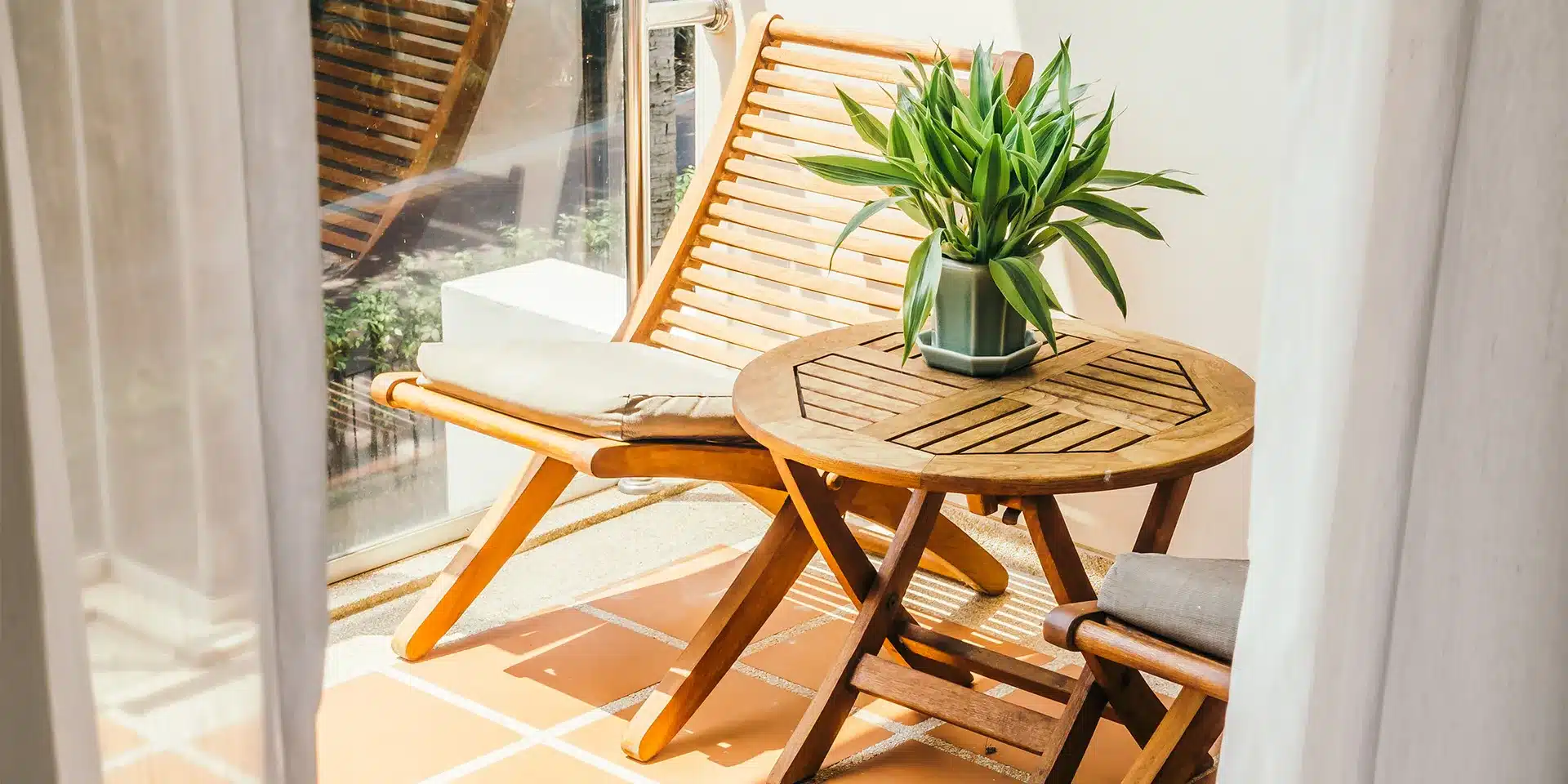
When cleaning wooden outdoor furniture, you can use a soft brush with mild soapy water to gently wipe it. Remember to avoid using high-pressure water washers and harsh acidic or alkaline cleaners to avoid damaging the surface of the wood. When encountering mildew spots, you can dilute white vinegar with water in a 1:1 ratio and wipe it. Be sure to dry the furniture after cleaning to avoid moisture residue from causing the wood to swell or deform.
2. Metal Furniture

To clean metal outdoor furniture, use a soft-bristled brush with mild soap water to gently scrub the surface. Avoid using a hard-bristled brush or abrasive cleaners, which can scratch the metal. If rust is present, spray it with a rust remover and then gently sand it with 80–120 grit sandpaper. Always dry the surface after cleaning to prevent water stains that lead to rust.
3. Wicker Furniture
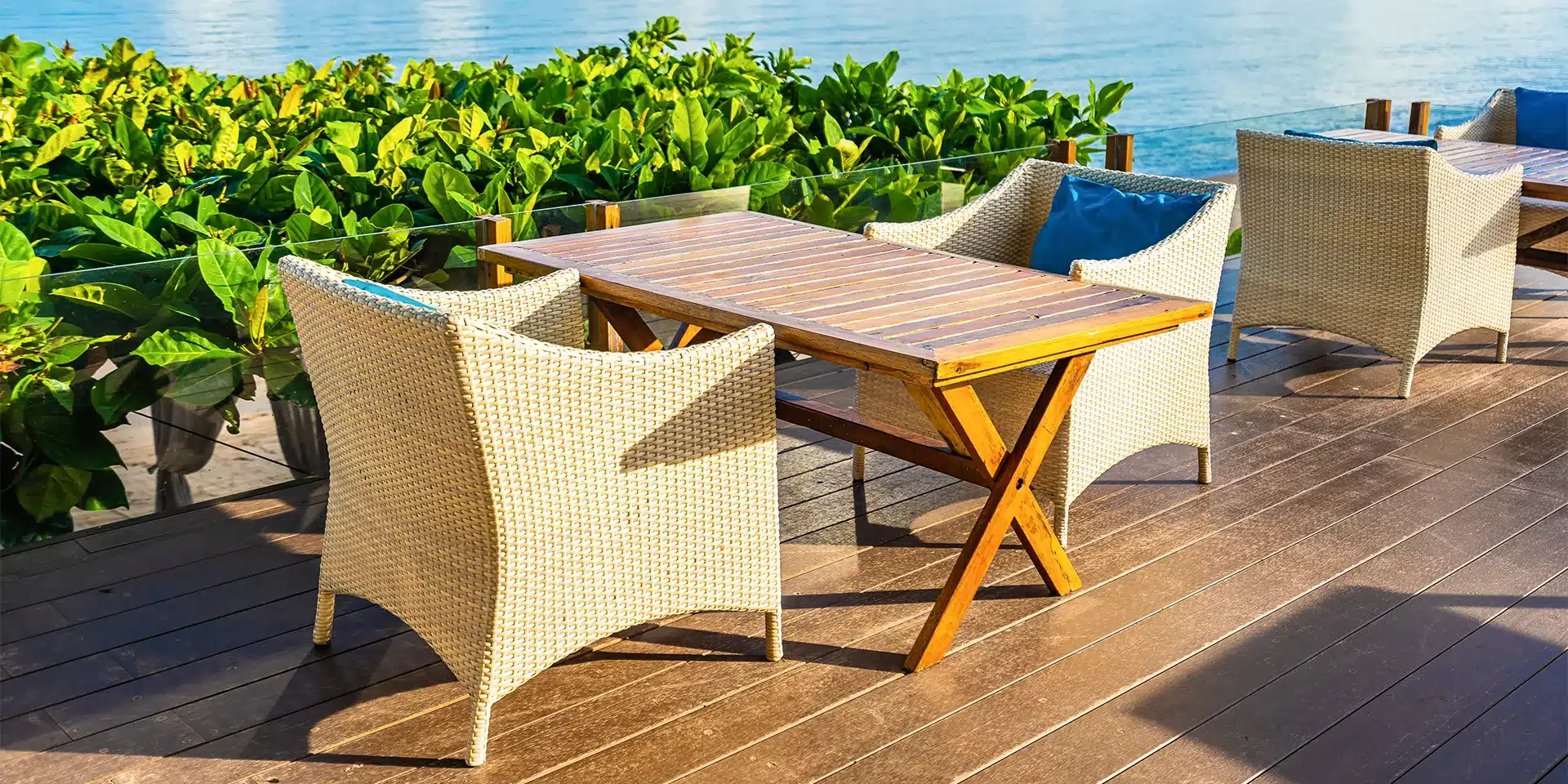
When cleaning, use a soft cloth or brush with mild soapy water to gently wipe. If mold is found, mix white vinegar and water in a ratio of 1:4, spray it on the moldy area, let it sit for a while, and then gently brush it off. After cleaning, be sure to dry it completely before using it to prevent moisture from causing mold.
4. Plastic Furniture
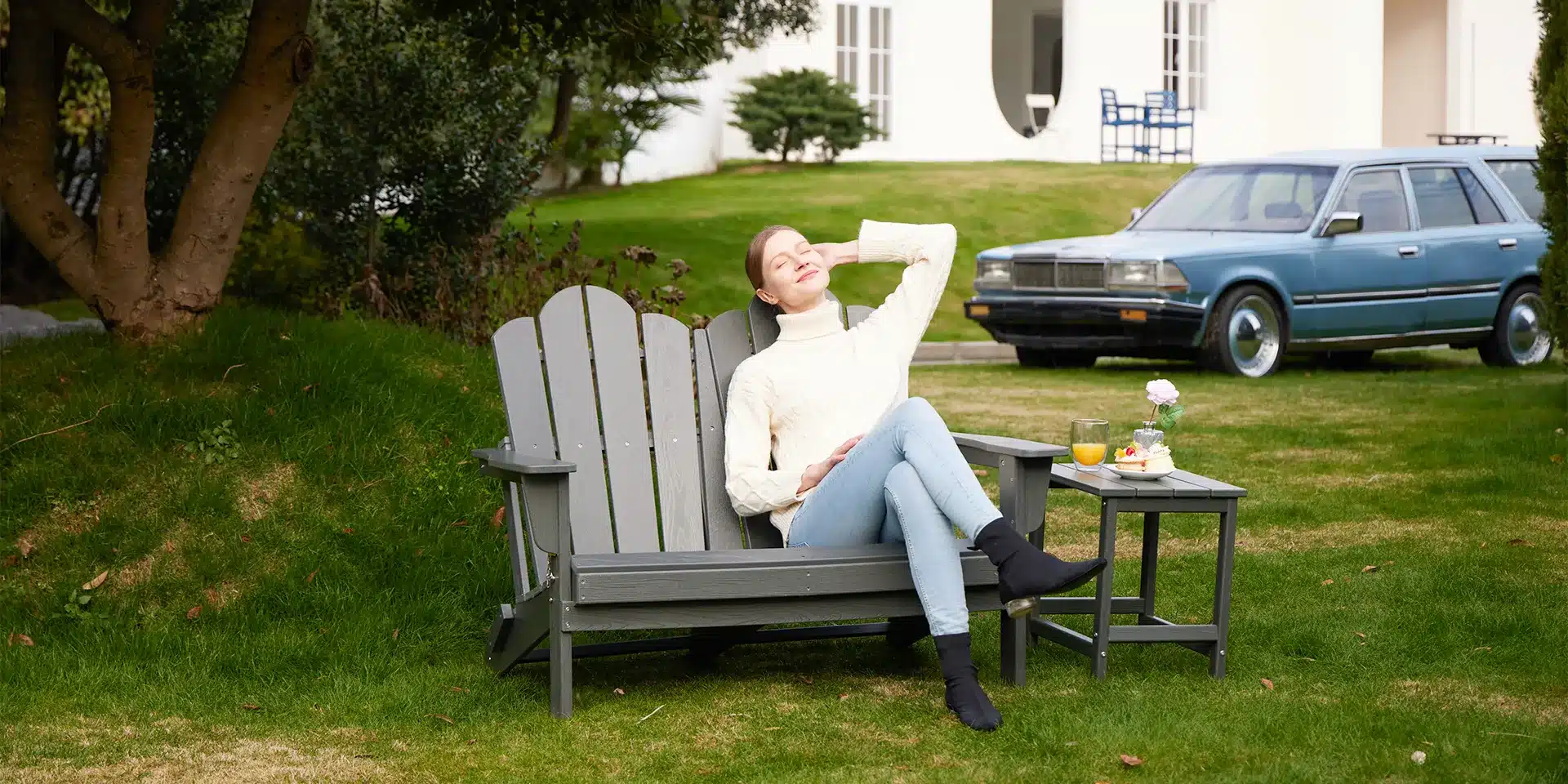
Compared to outdoor furniture made of the above materials, plastic outdoor furniture is easier to clean. You can also use a soft brush with mild soapy water to wipe the furniture. For stubborn stains, you can mix baking soda and water in a 4:1 ratio to make a paste, apply it to the stain, leave it for a while, and then scrub it clean with a brush. Finally, rinse it with clean water and dry it with a cloth or let it air dry.
5. Outdoor Fabrics

Before washing outdoor fabrics, first check whether they require machine washing or hand washing to avoid damage from improper care.
For daily cleaning of local stains, use a soft brush with a neutral detergent. If complete cleaning is required, choose machine wash or hand wash according to the label instructions. For mildew stains, use diluted white vinegar or bleach. Dry it thoroughly before putting it back into use.
Regular Maintenance for Outdoor Furniture
Regular maintenance is a key step to keeping your outdoor furniture clean. It helps remove dust and stains from the surface of the furniture in time to avoid them from solidifying or penetrating into the material, causing problems such as mold or rust.
1. Set a Cleaning Schedule
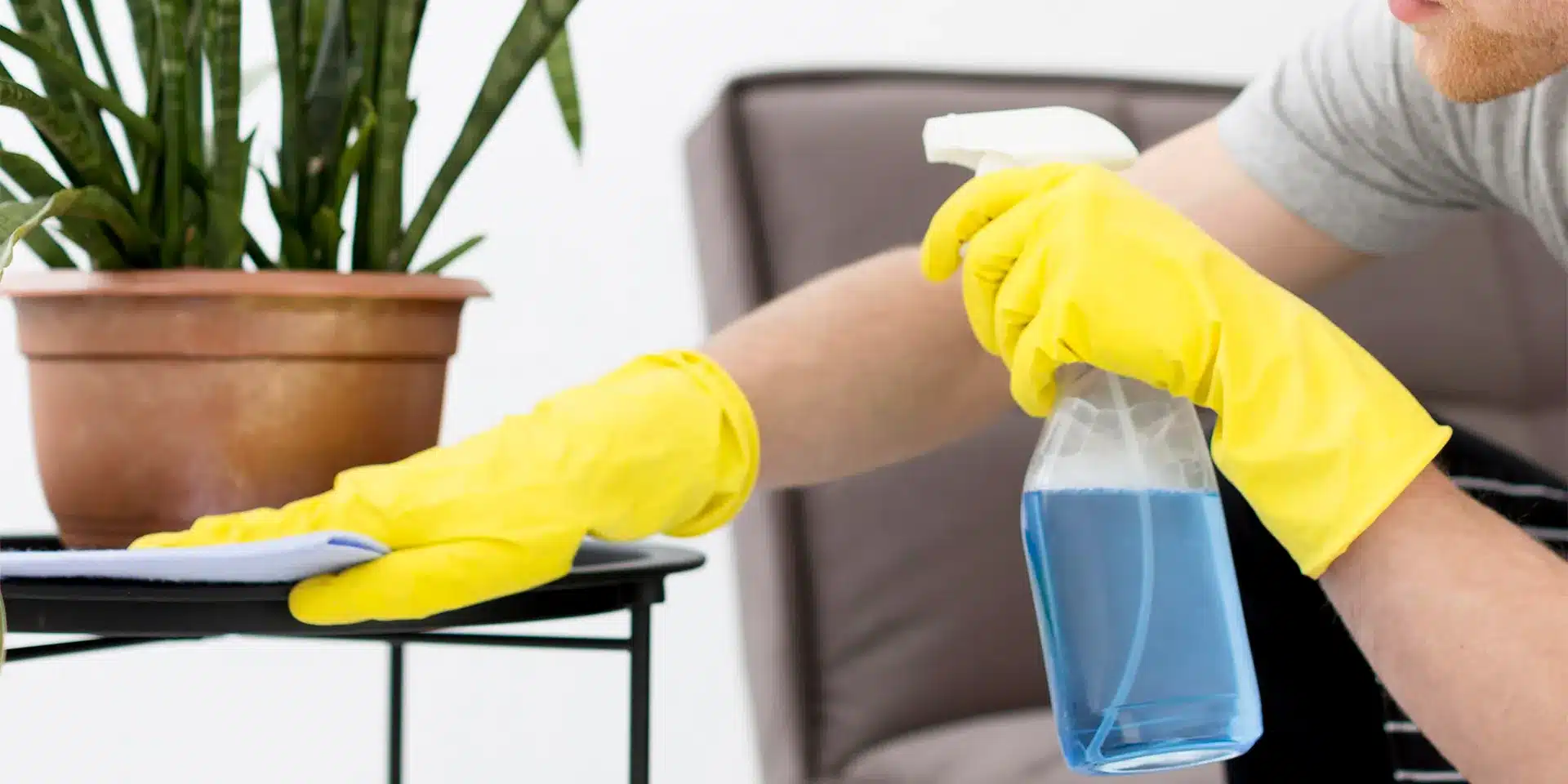
It’s recommended to do a basic cleaning of furniture every one to two weeks, especially in the windy spring and fall or the rainy summer months. Dust, fallen leaves and mud are easy to accumulate on the surface. If not promptly addressed, these elements can speed up the aging process of your furniture.
Even outdoor furniture that is being stored should be checked every 1-2 months. Prolonged storage may lead to moisture buildup. If you notice any mildew or unpleasant odors, air it out and dry it thoroughly, then clean the surface to prevent further damage.
2. Inspection and Timely Repairs
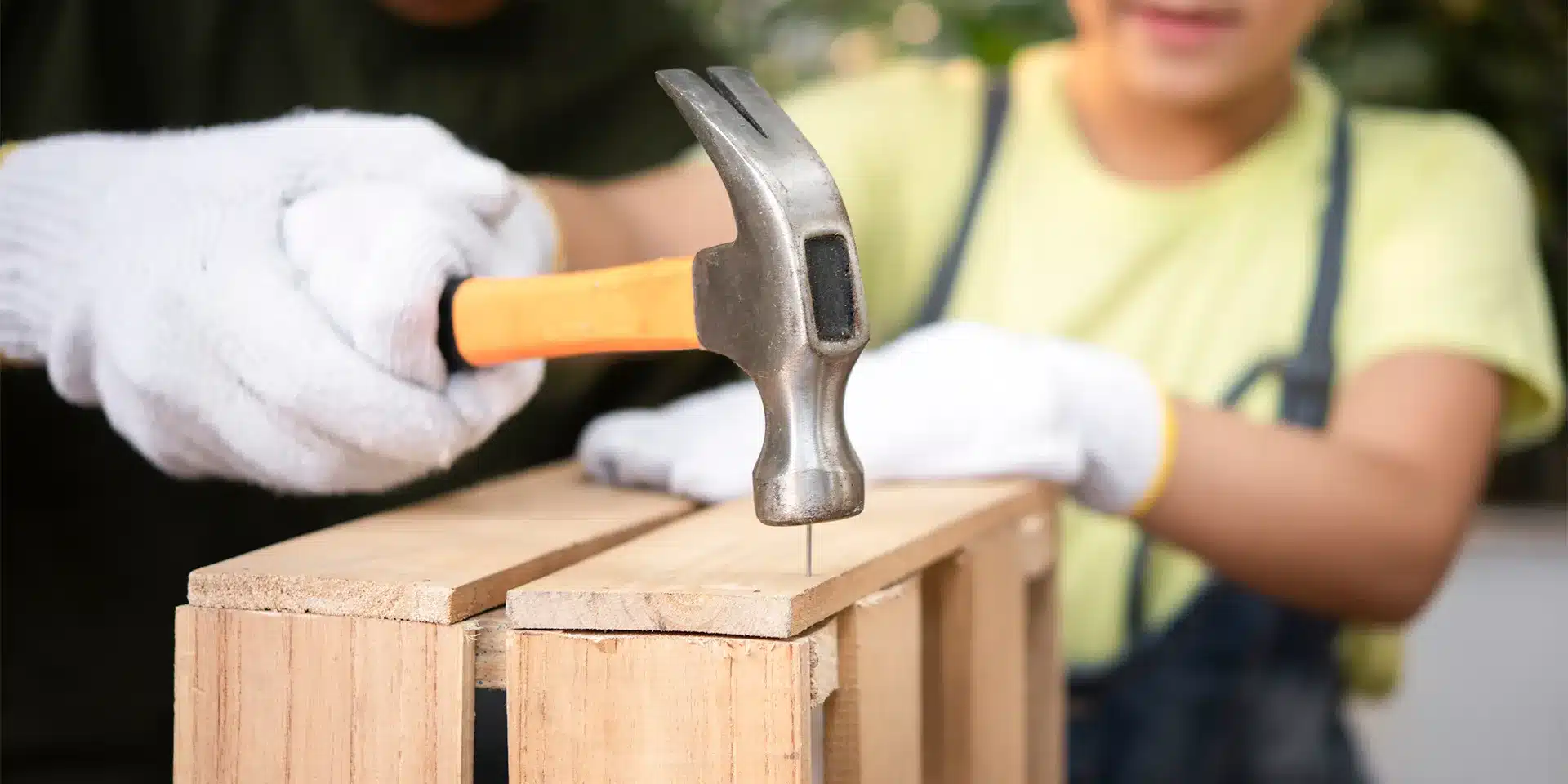
Even the best-quality furniture cannot fully withstand the test of time, so we need to check the furniture regularly. (This step can be done at the same time as cleaning.) When checking, first gently shake the furniture to make sure that the structure is stable and the hardware is not loose or missing. Then examine the surface for cracks in the slats, peeling paint or rust spots. For minor cracks, filler can be used to repair them, while serious ones need to be replaced; peeling paint needs to be repainted in time, and rust spots need to be sanded and then coated with rust-resistant paint.
3. Care for Your Furniture

Furniture made of different materials requires different care: wooden furniture needs to be regularly polished and coated with sealant to maintain its color and durability, metal furniture should be coated regularly with anti-rust oil or paint, wicker furniture needs to be oiled with linseed oil or special maintenance oil to help restore its gloss, and outdoor fabrics require regular cleaning and sun protection.
Seasonal Cleaning and Maintenance
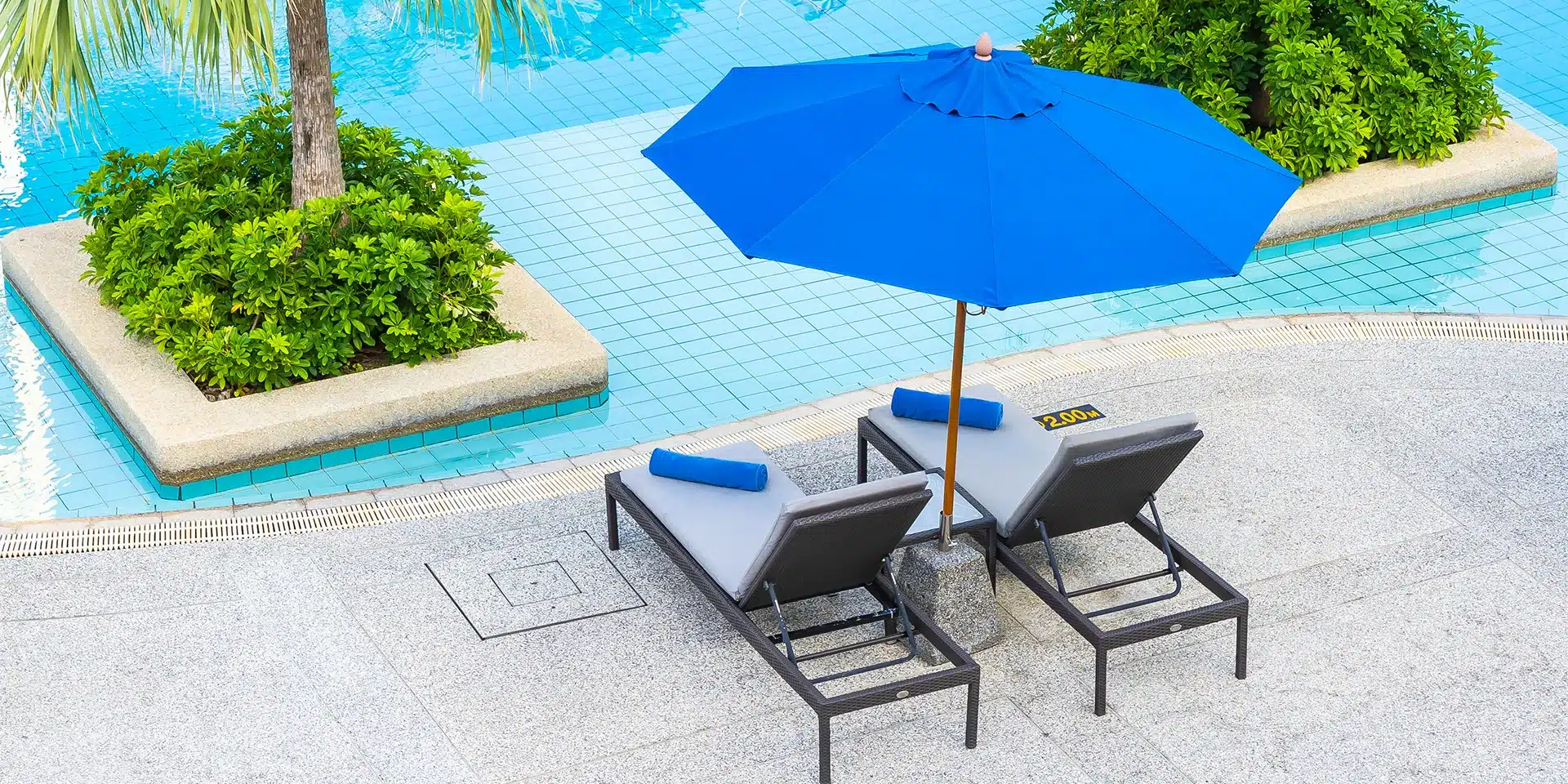
Outdoor furniture faces different climate challenges and environmental changes throughout the year. Proper seasonal cleaning and maintenance can effectively protect your furniture from damage and help keep it clean and in good condition.
1. Key Points for Spring
Spring marks the start of a new season for outdoor living. You should focus on removing the dust and dirt accumulated in the winter and thoroughly clean the furniture. At the same time, carefully check whether the furniture has cracks or damage caused by the cold months. If there is any, repair it in time to ensure that the furniture is restored to its best condition.
2. Key Points for Summer
In summer, the sun is strong and outdoor furniture is prone to fading and aging due to long-term exposure to UV rays. Therefore, it should be placed under a parasol or awning as much as possible. If necessary, you can use anti-ultraviolet spray to enhance protection. In the rainy months, you should also pay attention to the problem of water accumulation. After the rain, wipe the furniture immediately to prevent moisture from causing mildew or material damage.
3. Key Points for Fall
There are many windy days in fall, and the fallen leaves and sand blown by the wind are easy to accumulate on the surface or in the gaps of furniture, which need to be timely cleaned up. The temperature difference between day and night is also large in fall, and the humidity is heavier. Especially in coastal or humid areas, it’s necessary to do a good job of moisture prevention. You can use breathable furniture covers to avoid mildew.
4. Key Points for Winter
In winter, outdoor furniture needs to take effective cold and frost protection measures to prevent the low temperatures from causing the material to crack or deform. If conditions permit, it’s recommended to move the furniture indoors for storage; if it cannot be moved, it should be covered with a special protective cover to protect the furniture from severe cold and snow. If your area experiences frequent snowfall and the furniture happens to be stored outdoors, be sure to promptly clear off the snow to avoid damage.
Off-Season Storage for Outdoor Furniture
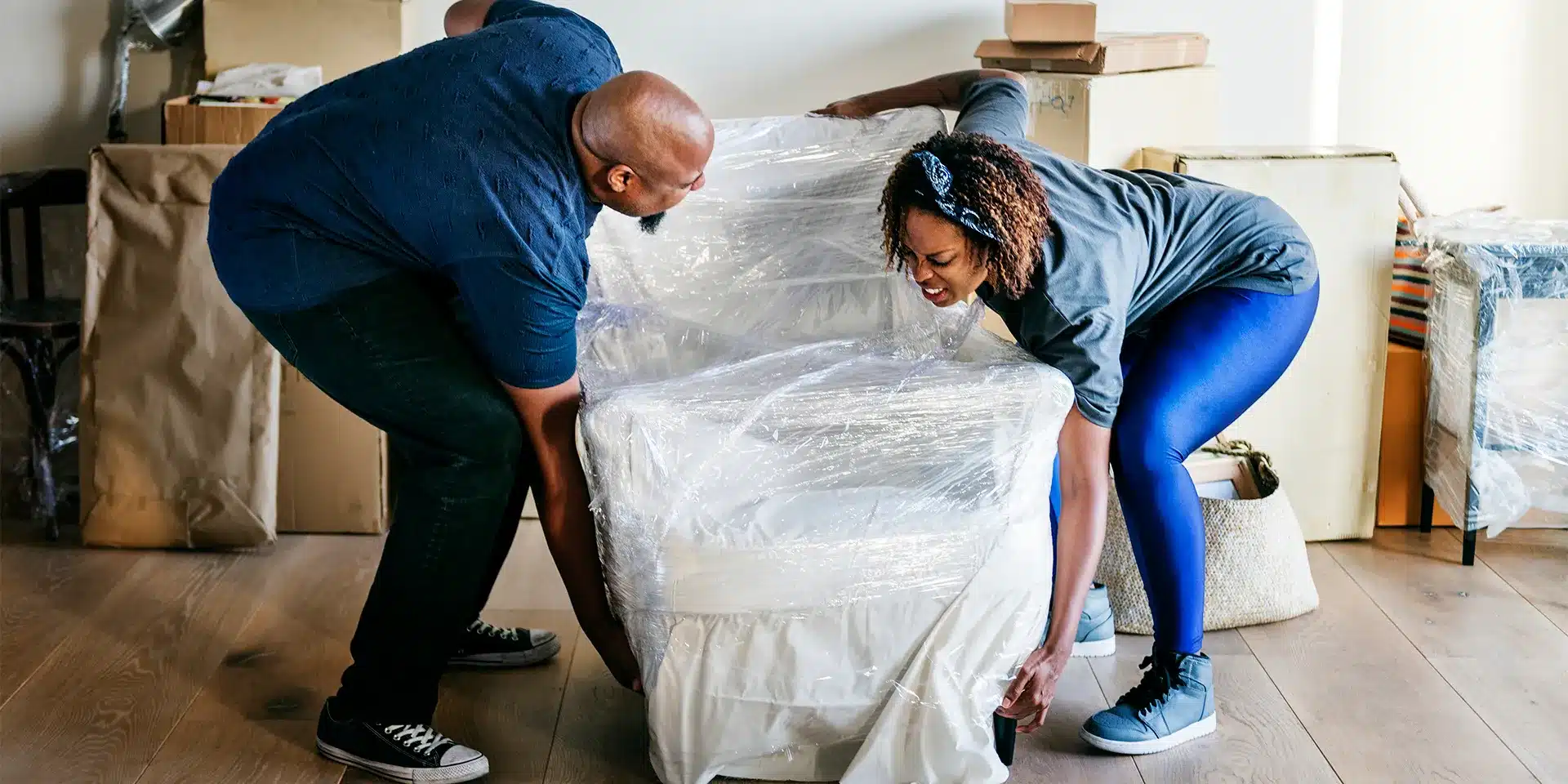
Properly storing outdoor furniture during the off-season is also an important step in keeping it clean. It can effectively prevent mold growth and unpleasant odors, saving you significant cleaning time when it’s time to use the furniture again.
1. Choose the Right Storage Space
The choice of storage environment for outdoor furniture is very critical. Give preference to dry, well-ventilated indoor spaces, such as garages or storage rooms. Avoid placing furniture in damp, dark environments, such as basements or open spaces, which can easily cause mold on the furniture surface, rust on metal parts, or deformation of wood due to moisture.
2. Measures for Moisture Resistance
Even in a relatively dry space, ground moisture may still affect the bottom of the furniture. It’s recommended to place a plastic sheet or a special moisture-proof mat under the furniture to avoid direct contact between the furniture and the ground.
3. Disassemble and Store by Category
For removable outdoor furniture, it’s best to disassemble and sort it before storage. Outdoor fabrics such as cushions should not be stored with furniture. They should be removed, thoroughly cleaned and dried, and stored separately in storage bags. Hardware can be put in a sealed bag for easy reassembly in spring. This saves space, improves storage efficiency, and reduces the risk of deformation or scratches when moving or stacking.
4. Using Furniture Storage Covers
Whether you plan to store your furniture outdoors or indoors, we recommend that you use a furniture cover. Furniture covers can effectively prevent dust accumulation and protect furniture from weather damage. Choose a breathable cover specifically designed for outdoor furniture to keep the furniture ventilated.
Final Thoughts
Keeping outdoor furniture clean isn’t complicated. As long as you choose the appropriate cleaning method according to the material, do daily and seasonal maintenance and ensure proper storage, we believe that your outdoor space will always be comfortable and pleasant.
If you’re looking for low-maintenance outdoor furniture, serwall outdoor furniture is the ideal choice. Made of HDPE and HIPS, it will last for many years without the need for regular maintenance.
Shop Serwall Outdoor Furniture Now !
-
Rated 4.73 out of 5244 reviews
Classic Folding Adirondack Chair
$189.99Original price was: $189.99.$119.99Current price is: $119.99. Ex. VAT This product has multiple variants. The options may be chosen on the product page -
Rated 4.77 out of 5136 reviews
Classic Folding Adirondack Chair with Cup Holders
$189.99Original price was: $189.99.$159.99Current price is: $159.99. Ex. VAT This product has multiple variants. The options may be chosen on the product page -
Rated 4.79 out of 5100 reviews
Two Shelf Side Table
$99.99 Ex. VAT This product has multiple variants. The options may be chosen on the product page -
Rated 4.80 out of 5189 reviews
Vintage Folding Adirondack Chair
$159.99Original price was: $159.99.$109.99Current price is: $109.99. Ex. VAT This product has multiple variants. The options may be chosen on the product page -
Rated 4.78 out of 5122 reviews
LITTORAL Chaise with Arms & Wheels
$239.99Original price was: $239.99.$189.99Current price is: $189.99. Ex. VAT This product has multiple variants. The options may be chosen on the product page -
Rated 4.83 out of 5116 reviews
Folding Adirondack Rocking Chair with Ottoman and Cup Holder
$249.99Original price was: $249.99.$219.99Current price is: $219.99. Ex. VAT This product has multiple variants. The options may be chosen on the product page -
Rated 4.84 out of 5145 reviews
GRANGE HDPE Outdoor Dining Arm Chair
$149.99Original price was: $149.99.$109.99Current price is: $109.99. Ex. VAT This product has multiple variants. The options may be chosen on the product page -
Rated 4.81 out of 586 reviews
HDPE Outdoor Two Shelf Side Table
$89.99 Ex. VAT This product has multiple variants. The options may be chosen on the product page -
Rated 4.79 out of 5129 reviews
MANOIR Porch Rocking Chair
$189.99Original price was: $189.99.$149.99Current price is: $149.99. Ex. VAT This product has multiple variants. The options may be chosen on the product page -
Rated 4.59 out of 5127 reviews
Joint Bar Height Adirondack Chairs with Connecting Table
$499.99Original price was: $499.99.$369.99Current price is: $369.99. Ex. VAT This product has multiple variants. The options may be chosen on the product page -

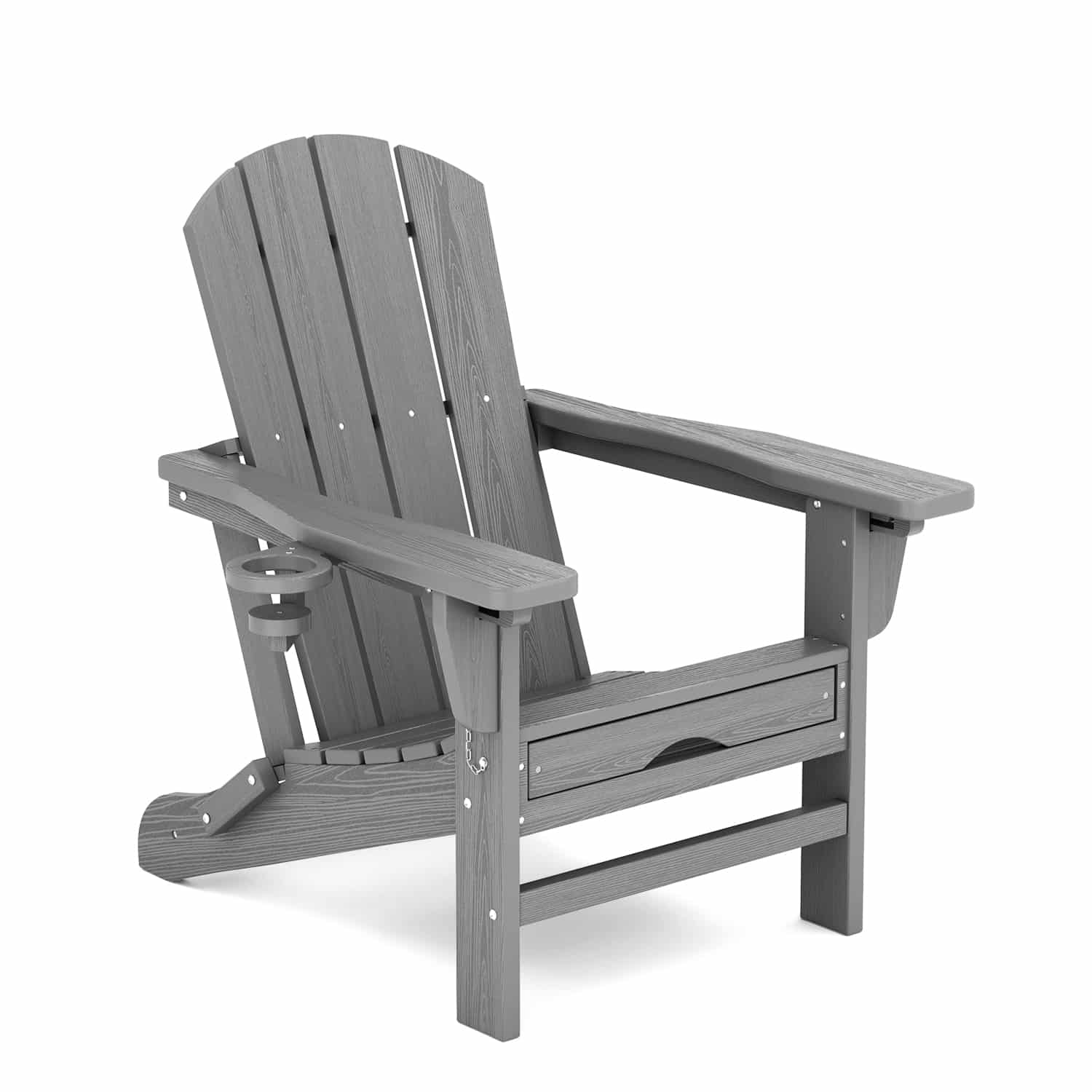 SOLD OUTSOLD OUTSOLD OUTSOLD OUTSOLD OUTSOLD OUTSOLD OUTSOLD OUTSOLD OUTSOLD OUTSOLD OUTSOLD OUTSOLD OUTSOLD OUTSOLD OUTRated 4.81 out of 5105 reviews
SOLD OUTSOLD OUTSOLD OUTSOLD OUTSOLD OUTSOLD OUTSOLD OUTSOLD OUTSOLD OUTSOLD OUTSOLD OUTSOLD OUTSOLD OUTSOLD OUTSOLD OUTRated 4.81 out of 5105 reviewsReclining Folding Adirondack Chair with Ottoman
$219.99 Ex. VAT This product has multiple variants. The options may be chosen on the product page -
Rated 4.82 out of 5126 reviews
Classic Folding Adirondack Chair with Reclining Backrest
$189.99Original price was: $189.99.$149.99Current price is: $149.99. Ex. VAT This product has multiple variants. The options may be chosen on the product page

